

Zitierweise / cite as:
Payer, Alois <1944 - >: Chronik Thailands = กาลานุกรมสยามประเทศไทย. -- Chronik B. E. 2473 / 1930-04 - 1931-03 (Rama VII.). -- Fassung vom 2016-12-16. -- URL: http://www.payer.de/thailandchronik/chronik1930-31.htm
Erstmals publiziert: 2013-05-16
Überarbeitungen: 2016-12-16 [Ergänzungen] ; 2016-11-26 [Ergänzungen] ; 2016-10-31 [Ergänzungen] ; 2016-02-19 [Ergänzungen] ; 2016-01-07 [Ergänzungen] ; 2015-12-31 [Ergänzungen] ; 2015-12-11 [Ergänzungen] ; 2015-09-18 [Ergänzungen] ; 2015-09-10 [Ergänzungen] ; 2015-07-08 [Ergänzungen] ; 2015-04-23 [Ergänzungen] ; 2015-04-10 [Ergänzungen] ; 2015-02-13 [Ergänzungen] ; 2015-01-27 [Ergänzungen] ; 2014-10-26 [Ergänzungen] ; 2014-09-29 [Ergänzungen] ; 2014-08-24 [Ergänzungen] ; 2014-08-11 [Ergänzungen] ; 2014-04-16 [Ergänzungen] ; 2014-03-31 [Ergänzungen] ; 2014-03-06 [Ergänzungen] ; 2014-01-01 [Ergänzungen] ; 2013-12-21 [Ergänzungen] ; 2013-12-05 [Ergänzungen] ; 2013-11-27 [Ergänzungen] ; 2013-10-31 [Ergänzungen] ; 2013-10-15 [Ergänzungen] ; 2013-10-04 [Ergänzungen] ; 2013-09-29 [Ergänzungen] ; 2013-09-19 [Ergänzungen] ; 2013-09-05 [Ergänzungen] ; 2013-07-06 [Ergänzungen] ; 2013-06-27 [Ergänzungen] ; 2013-06-21 [Ergänzungen]
©opyright: Dieser Text steht der Allgemeinheit zur Verfügung. Eine Verwertung in Publikationen, die über übliche Zitate hinausgeht, bedarf der ausdrücklichen Genehmigung des Herausgebers.
Dieser Text ist Teil der Abteilung
Thailand von
Tüpfli's Global Village Library
ช้างตายทั้งตัวเอาใบบัวปิดไม่มิด
|
Gewidmet meiner lieben Frau Margarete Payer die seit unserem ersten Besuch in Thailand 1974 mit mir die Liebe zu den und die Sorge um die Bewohner Thailands teilt. |
|
Bei thailändischen Statistiken muss man mit allen Fehlerquellen rechnen, die in folgendem Werk beschrieben sind:
Die Statistikdiagramme geben also meistens eher qualitative als korrekte quantitative Beziehungen wieder.
|
Statistische Daten 1930:
|
1930
Abb.: Frauen, Lamphun (ลำพูน), 1930
Abb.: Lage von Lamphun (ลำพูน)
[Bildquelle: OpenStreetMap. -- Creative Commons Lizenz (Namensnennung, share alike)]
1930
Abb.: Songkhla (สงขลา) / Singora, 1930
Abb.: Lage von Songkhla (สงขลา) / Singora
[Bildquelle: OpenStreetMap. -- Creative Commons Lizenz (Namensnennung, share alike)]
1930
Abb.: Telefonvermittlung, Bangkok, 1930
1930
Aufhebung der Schulsteuer (education poll tax). Als Ersatz werden aus dem königlichen Schatz 3 Mio. Baht zur Verfügung gestellt.
1930

In Angesicht von Bauernaufständen in Vietnam schreibt Rama VII.:
"As long as French rule continues in Vietnam it is a 'safeguard' for Siam. No matter how much we sympathize with the Vietnamese, when one thinks of the danger that might arise, one has to hope that the Vietnamese will not easily escape from the power of the French. Aside from the necessity of maintaining good relations with the French, I believe it is the direct interest of Siam not to give protection to Vietnamese rebels or in any way to aid the Vietnamese in freeing themselves from French rule." [Zitiert in: Anderson, Benedict R. O'G. (Richard O’Gorman) <1936 - >: Exploration and irony in studies of Siam over forty years. -- Ithaca, NY : Cornell, 2014. -- 166 S. : Ill. ; 26 cm. -- (Sudies on Southeast Asia series ; no. 63). -- ISBN 978-0-87727-763-7. -- S. 23, Anm. 19]
ca. 1930

Rama VIII. bringt Khamen Pak Tho (เขมรปากท่อ) die endgültige Fassung
Abb.: Khamen Pak Tho (Thao) (เขมรปากท่อ ( เถา ))
[Bildquelle: Morton, David <1920 - 2004>: The traditional Music of Thailand. -- Berkeley : University of California Press, 1976. -- 258 S. : Ill. ; 29 cm. -- ISBN 0-520-01876-1. -- S. 218. -- Fair use]
Abb.: Khamen Pak Tho (Thao) (เขมรปากท่อ ( เถา ))
[Bildquelle: http://image.slidesharecdn.com/thaimusic8-151010043534-lva1-app6892/95/thai-music8-47-638.jpg?cb=1444452105. -- Zugriff am 2016-01-06. -- Fair use]
1930


Raymond Bartlett Stevens (1874 – 1942), US Berater für Außenpolitik, an Prinz Boworadet (พลเอก พระวรวงศ์เธอ พระองค์เจ้าบวรเดช, 1877 - 1953):
"I am of the opinion after four years’ service here in Siam that an unlimited monarchy is certainly for a considerable period of time the best government for the country." [Zitiert in: Batson, Benjamin Arthur <1942 - >: The end of the absolute monarchy in Siam. -- Singapore : Oxford Univ. Pr., 1984. -- 349 S. : Ill. ; 22 cm. -- (Southeast Asia publications series ; no. 10). -- ISBN 0-19-582612-4. -- S. 148]
1930

สามัคคีสาร = Samaggi Sara, die Zeitschrift von The Thai Association in the UK:
"The future of Siam is entirely in the hands of Old Siam, and Young Siam abroad looks on with real concern, in spite of the paradise of wine, women and gambling in which he is supposed to while away his working hours." [Zitiert in: Batson, Benjamin Arthur <1942 - >: The end of the absolute monarchy in Siam. -- Singapore : Oxford Univ. Pr., 1984. -- 349 S. : Ill. ; 22 cm. -- (Southeast Asia publications series ; no. 10). -- ISBN 0-19-582612-4. -- S. 81]
Prinz Chula Chakrabongse (จุลจักรพงษ์, 1908 - 1963) in derselben Nummer von Samaggi Sara:
"The most necessary item also is our history in relation to that of Europe and America. We must give up filling our children’s heads with dates of births and deaths of obscure kings of Ayudhya, whom they took to wife, and who usurped the throne. We must keep in mind Siam of the last 150 years. . . . What we teach, however, must be the truth, or it would be better to teach nothing." [Zitiert in: Batson, Benjamin Arthur <1942 - >: The end of the absolute monarchy in Siam. -- Singapore : Oxford Univ. Pr., 1984. -- 349 S. : Ill. ; 22 cm. -- (Southeast Asia publications series ; no. 10). -- ISBN 0-19-582612-4. -- S. 81f.]
1930
No.Mo.So. (น.ม.ส. = Prinz Phittayalongkorn - พระราชวรวงศ์เธอ พระองค์เจ้ารัชนีแจ่มจรัส กรมหมื่นพิทยาลงกรณ์, 1876 - 1945) in กลอนและนักกลอน ("Poesie und Poeten") über die Thais als Volk der Reimer:
Abb.: Briefmarke: Prinz Phittayalongkorn (พระราชวรวงศ์เธอ พระองค์เจ้ารัชนีแจ่มจรัส กรมหมื่นพิทยาลงกรณ์)
[Fair use]
"Thailand Is a Nation of Rhymers. Siamese Thais are rhymers by habit. There are plenty of poets from the highest to the lowest classes. Some of them are scholars but many more are illiterates. The scholars who become poets may do so because of their literacy as well as disposition. But the illiterates do so purely on account of their disposition. If we are to publish a collection of all the verses composed by these illiterate rhymers in a year, it will take up a great many volumes...If one is to estimate what percentage of the population of this country are rhymers, the figure should not be less than that of any other country in the world. We love rhyming so much that we versify not only in our own traditional genres, but also in those of other languages. And once we get hold of them, we do not follow their original version but modify them to suit our ears by adding rhymes, thus making them much more difficult..." [Übersetzt in: Kasian Tejapira [เกษียร เตชะพีระ] <1957 - >: Commodifying Marxism : the formation of modern Thai radical culture, 1927-1958. -- Kyoto : Kyoto Univ. Pr., 2001. -- 390 S. : Ill. ; 23 cm. -- (Kyoto area studies on Asia ; 3). -- ISBN 1876843985. -- Revision of the author's thesis (doctoral) -- Cornell University, 1992. -- S. 199f.]
1930

Phra Sarasat Pholakhan [พระสารสาสน์พลขันธ์, 1889/90 - 1966] verteilt unter den siamesischen Studenten eine Flugblatt serie mit dem Titel "Let us cut the bunk".
Abb.: Phra Sarasat Pholakhan [พระสารสาสน์พลขันธ์]
[Bildquelle: th.Wikipedia. -- Public domain]Auszüge daraus:
"Are we not fully intimidated by petty phantoms of superstition, fully hampered by the chains of empty but imperative religious ceremonial, fully influenced by the engrossing observance of times and seasons, fully preoccupied with our past and our next life, until we have no confidence in ourselves, until instead of winning fortune by our own hands, we are negatively seeking it in the signs of heaven, in gods, in the aspects of nature and in the vague and empty past?" [Zitiert in: Skrobanek, Walter <1941 - 2006>: Buddhistische Politik in Thailand : mit besonderer Berücksichtigung des heterodoxen Messianismus. -- Wiesbaden : Steiner, 1976. -- 315 S. ; 24 cm. -- (Beiträge zur Südasienforschung ; 23). -- ISBN 3-515-02390-9. -- Zugl.: Heidelberg, Univ., Diss., 1972. -- S. 63. -- Mit Erlaubnis des inzwischen verstorbenen Autors]
1930 - 1935
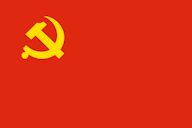
Die kommunistischen Chinesen Chinas stehen stark unter dem Einfluss der Linie von Wang Ming (王明, 1904 - 1974) innerhalb der Kommunistischen Partei Chinas ( 中國共產黨)
Abb.: Wang Ming (王明)
[Bildquelle: Wikimedia. -- Public domain]
"Wang Ming (chinesisch: 王明; Pinyin: Wáng Míng; * 23. Mai 1904 in Jinzhai (金寨), Anhui (安徽); † 27. März 1974 in Moskau - Москва́) war ein Führer der Kommunistischen Partei Chinas (KPCh, 中國共產黨) sowie der Kopf der Gruppe der 28 Bolschewiki (二十八个布尔什维克). Sein Geburtsname war Chen Shaoyu (陳紹禹). Wang Ming war sein Pseudonym, unter dem er bekannt wurde. Wang war in den 1930er Jahren einer der wichtigsten Gegner Mao Zedongs (毛澤東, 1893 - 1975) und seiner von den Direktiven der Komintern (Коммунистический интернационал) und der orthodoxen marxistisch-leninistischen abweichenden Linie. Die Konkurrenz zwischen Wang und Mao reflektiert den Machtkampf zwischen der Sowjetunion und der Komintern auf der einen und der KPCh auf der anderen Seite um Richtung und Zukunft der chinesischen Revolution.
Wang studierte an der Sun-Yat-sen-Universität (莫斯科中山大学) in Moskau und war ab 1931 Leiter der KPCh-Delegation bei der Komintern, wo er zum Exekutiv-Kommissar, Präsidiumsmitglied und stellvertretenden Direktor der Komintern gewählt wurde. 1937 setzte Wang gegen den Willen Maos, der in Chiang Kai-shek ( 蔣介石, 1887 - 1975) den Hauptfeind der Kommunisten sah, die Einheitsfront mit der Kuomintang (中國國民黨) gegen die japanische Besetzung der Mandschurei (满洲) durch. 1941 verweigerte er die von Mao geforderte Selbstbezichtigung und Loyalitätserklärung. Stattdessen kritisierte er weiterhin die Politik Maos gegenüber Chiang Kai-shek und Japan. Bald darauf erkrankte er schwer. In seinem später erschienenen Buch „50 Jahre KP Chinas und der Verrat Mao Zedongs“ behauptet Wang, Mao habe versucht, ihn vergiften zu lassen. Diese Version wird auch von Jung Chang (張戎, 1952 - ) vertreten. 1956 ging Wang zur medizinischen Behandlung in die Sowjetunion und kehrte bis zu seinem Tod nicht mehr nach China zurück."
[Quelle: https://de.wikipedia.org/wiki/Wang_Ming. -- Zugriff am 2015-01-27]
1930 - 1937
Chinesische Händler in British-Malaya bilden eine Genossenschaft, erwerben mehrere km² Land zwischen Patthalung (พัทลุง) und Thung Song (ทุ่งสง), bebauen dieses Land großflächig mit Reis unter Einsatz von Traktoren und modernen Landwirtschaftsmaschinen. Die Genossenschaft baut eine eigene Reismühle und unternimmt die Vermarktung des Reises in Eigenregie. Das Experiment ist erfolgreich und eine zweite Genossenschaft von Chinesen folgt diesem Beispiel.
Abb.: Lage von Patthalung (พัทลุง) und Thung Song (ทุ่งสง)
[Bildquelle: OpenStreetMap. -- Creative Commons Lizenz (Namensnennung, share alike)]
1930/1931
Anteile der einzelnen Ressorts an den staatlichen Ausgaben
Abb.: Anteil der einzelnen Ressorts an den Ausgaben des Staatshaushalts (in Prozent), 1930
[Datenquelle: Thompson, Virginia <1903 - 1990>: Thailand the new Siam. -- New York : Macmillan, 1941. -- S. 551]
1930
Preis von Opium
Preis pro Tael (兩, 37 g) Opium staatlich monopolisiertes geschmuggeltes Nordsiam 11,40 Baht 6 Baht Bangkok 15 Baht 10 Baht
Abb.: Roh-Opium
[Bildquelle: Erik Fenderson / Wikipedia. -- Public domain]
1930-01 - 1931-06
Zimmerman, Carle C. (Carle Clark) <1897 - 1984>: Siam : rural economic survey 1930 - 1931. -- Bangkok : Bangkok Times Pr., 1931. -- 321 S. ; Ill. : 25 cm.
Dies ist der erste statistisch einigermaßen zuverlässige Report Siams.
1930/31
Weniger als 1% der Bauern leben in polygamer Ehe (Vielweiberei).
1930/31
Bareinkommen eines Bauernhaushalts
Abb.: Durchschnittliches Bareinkommen eines Bauernhaushalts 1930/31 (in Baht) mit Anteil von Ernte, tierischen Produkten und Fischfang
[Datenquelle: Rural economic survey 1930 - 1931. -- S. 48f.]
1930
Abb.: Markt, Bangkok, 1930
1930/31
Ausgaben eines Bauernhaushalts
Abb.: Durchschnittliche Ausgaben eines Bauernhaushalts 1930/31 (in Baht)
[Datenquelle: Rural economic survey 1930 - 1931. -- S. 50ff.]
1930/31
Ausgaben eines Bauernhaushalts 1930/31 für fremde Arbeitskräfte und Tiere
Abb.: Durchschnittliche Ausgaben eines Bauernhaushalts 1930/31 für fremde Arbeitskräfte und Tiere (in Baht)
[Datenquelle: Rural economic survey 1930 - 1931. -- S. 75f.]
1930/31
Ausgaben für traditionelle medizinische Behandlung und Geburtshilfe
Abb.: Durchschnittliche Ausgaben eines Bauernhaushalts für traditionelle medizinische Behandlung und Geburtshilfe 1930/31 (in Baht)
[Datenquelle: Rural economic survey 1930 - 1931. -- S. 237.]
1930/31
Gesamtkosten für Geburt bzw. Tod (Kremation)
Abb.: Durchschnittliche Gesamtkosten für Geburt bzw. Tod (Kremation + Verdiensttun - ทำบุญ) 1930/31
[Datenquelle: Rural economic survey 1930 - 1931. -- S. 237.]
1930/31
Jährliche direkte Steuern
Abb.: Durchschnittliche jährliche direkte Steuern pro Familie, 1930/31
[Datenquelle: Rural economic survey 1930 - 1931. -- S. 78f..]In Zentralthailand betragen die direkten Steuern 7% aller Haushaltsaugaben, im übrigen Siam 5%.
1930/31
Malariafälle in 2000 Bauernhaushalten mit 9430 Personen: insgesamt 2.190 Fälle (= 23%)
Abb.: Malaria-Erkrankte in Prozent der Untersuchten 1930/31
(Insert: Albrecht Dürer zeigt auf seine vergrößerte Milz, ein typisches Symptom von Malaria)
[Datenquelle: Rural economic survey 1930 - 1931. -- S. 247.]
1930/31
Einkommenserwartungen von westlich ausgebildeten Ärzten:
- Arzt mit Ausbildung im Ausland: 240 bis 300 Baht pro Monat
- Arzt mit Master des Medical College in Bangkok: 160 bis 220 Baht pro Monat
1930

Christliche Missionsspitäler gibt es in 10 Städten. Außerhalb Bangkok behandelten Missionsspitäler 1930 nur 20.000 Patienten.
An der Chulalongkorn University (จุฬาลงกรณ์มหาวิทยาลัย) graduieren jährlich nur 20 Ärzte. Bei diesem Tempo würde es 400 Jahre dauern bis Siam genügend Ärzte hat!
1930 - 1950-11-12

N.N. (geb. 1894) ist muslimischer Chularajamontri พระจุฬาราชมนตรี - สอน อหะหมัดจุฬา
Abb.: พระจุฬาราชมนตรี - สอน อหะหมัดจุฬา
[Bildquelle: th.Wikipedia]
1930/31
Schulden einer Bauernfamilie:
Abb.: Durchschnittschulden einer Bauernfamilie 1930/31 (in Baht)
[Datenquelle: Rural economic survey 1930 - 1931. -- S. 200.]
Abb.: Von hundert Bauernfamilien sind verschuldet, 1930/31
[Datenquelle: Rural economic survey 1930 - 1931. -- S. 201.]
Abb.: Von hundert verschuldeten Bauernfamilien zahlen Kreditzinsen, 1930/31
[Datenquelle: Rural economic survey 1930 - 1931. -- S. 201.]
Abb.: Durchschnittlicher Zinssatz auf Kredite 1930/31
[Datenquelle: Rural economic survey 1930 - 1931. -- S. 201.]Spitzenreiter unter den Kredithaien ist Songkhla (สงขลา) mit einem durchschnittlichen Zinssatz von über 100% !
Abb.: Lage von Songkhla (สงขลา)
[Bildquelle: OpenStreetMap. -- Creative Commons Lizenz (Namensnennung, share alike)]Sehr hoch ist auch der Zinssatz in Khlong Rangsit (คลองรังสิต). Dort ist die durchschnittliche Größe von Grundbesitz pro Haushalt 100 Rai (ไร่) (= 160.000 m²)
Abb.: Lage von Khlong Rangsit (คลองรังสิต)
[Bildquelle: OpenStreetMap. -- Creative Commons Lizenz (Namensnennung, share alike)]Auf ganz Thailand bezogen sind die privaten Gesamtschulden 78 Mio. Baht, jährlich werden dafür 17,2 Mio. Baht Zinsen bezahlt.
1930/31
Durchschnittliches landwirtschaftliches Gut in Zentralthailand:
Abb.: Durchschnittliches landwirtschaftliches Gut in Zentralthailand 1930/31
[Datenquelle: Phongpaichit / Baker (1995), S. 26]
1930/31
Landlose Bauern in Zentralthailand (Prozent der Bauern):
Abb.: Landlose Bauern in Zentralthailand (in Prozent der Bauern) 1930/31
[Datenquelle: Phongpaichit / Baker (1995), S. 26]
Abb.: Provinzen Zentralthailands
[Bildquelle: NordNordWest / Wikipedia. -- Creative Commons Lizenz (Namensnennung, share alike)]
Laem Sing (แหลมสิงห์) liegt in der Provinz Chantaburi
Thanyaburi (ธัญบุรี) liegt in der Provinz Pathum Thani
1930/31
Eigentum und Schulden eines durchschnittlichen Bauernhaushalts:
Abb.: Wert des Eigentums und Schulden eines durchschnittlichen Bauernhaushalts 1930/31 (in Baht)
[Datenquelle: Rural economic survey 1930 - 1931. -- S. 96.]
Abb.: Zusammensetzung des Eigentums eines Bauernhaushalts 1930/31 ererbt bzw. erworben (in Baht)
[Datenquelle: Rural economic survey 1930 - 1931. -- S. 97.]
Abb.: Jährlicher durchschnittlicher Erwerb an Eigentum in den letzten 20 Jahren 1930/31 (Wert in Baht)
[Datenquelle: Rural economic survey 1930 - 1931. -- S. 97.]
1930/31
Anteil verschiedener Haushaltsausgaben an den Gesamtausgaben eines Bauernhaushalts:
Abb.: Anteil verschiedener Haushaltausgaben an den Gesamtausgaben eines durchschnittlichen Bauernhaushalts 1930/31 (in Prozent der Gesamtausgaben)
[Datenquelle: Rural economic survey 1930 - 1931. -- S. 108]
1930/1931
Anbau von Klebereis (ข้าวเหนียว)
Abb.: Anteil von Klebereis (ข้าวเหนียว) und Nichtklebe-Reis am Reisanbau 1930/31
[Datenquelle: Rural economic survey 1930 - 1931. -- S. 141ff.]
Abb.: Klebereis (ข้าวเหนียว), Chiang Mai (เชียงใหม่), 2010
[Bildquelle: Takeaway / Wikimedia. -- GNU FDLicense]
1930
Erstmals wird im Staatshaushalt eine größere Summe für Bewässerungsprojekte in Nordthailand ausgewiesen: 2 Mio. Baht für Bewässerungsprojekte in den Provinzen Chiang Mai (เชียงใหม่) und Lampang (ลำปาง). Im Gegensatz zur Zentralebene sind die Bauern im Norden bereit, für Bewässerung Gebühren zu zahlen.
Abb.: Lage der Provinzen Chiang Mai (เชียงใหม่) und Lampang (ลำปาง)
[Bildquelel: CIA. -- Public domain]Als erstes wird der Mae Faek Kanal (แม่แฝก) in der Provinz Chiang Mai erstellt: er bewässert ca. 68.000 Rai Land, ein Drittel davon ist noch Urwald. Als nächstes wird der Mae Wang Kanal (แม่วาง) in der Provinz Lampang gebaut. Lampang musste bisher Reis aus Chiang Rai (เชียงราย) einführen, da in der Provinz selbst zu wenig Reis gedieh.
1930
Das Innenministerium beschließt, keine Konzessionen zur Trinkwasserversorgung an Privatfirmen zu vergeben. Trotzdem verkaufen in einigen Städten Privatfirmen Trinkwasser zu horrenden Preisen: in Nakhon Ratchasima (นครราชสีมา) kosten bei einer solchen Firma 30 Liter Trinkwasser in der Regenzeit einen Satang (สตางค์), während der Trockenzeit 25 Satang.
Abb.: Lage von Nakhon Ratchasima (นครราชสีมา)
[Bildquelle: OpenStreetMap. -- Creative Commons Lizenz (Namensnennung, share alike)]
1930ff.
Eine Wurzel-Pilzerkrankung (vermutlich Phytophthora capsici) zerstört ganze Pfeffer-Plantagen und breitet sich in den folgenden Jahren immer mehr aus. Siam weigert sich, ausländische Experten beizuziehen.
Abb: Befall von Pfeffer mit Phytophthora capsici
[Bildquelle: http://www.ces.ncsu.edu/depts/pp/notes/Vegetable/vdin027/vdin027.htm. -- Zugriff am 2013-12-05]
1930/1931
Die Hohlmaße (z.B. Thanan - ทะนาน) sind nur jeweils innerhalb eines Dorfes einigermaßen standardisiert. Jeder Korbmacher hat seine eigenen Musterkörbe, nach denen er alle Körbe des Dorfes herstellt. Deshalb sind Maßangaben trotz gleicher Namen zwischen Dörfern nicht kompatibel. Reis wird in Hohlmaßen und in Gewicht verkauft, in Nakhon Ratchasima (นครราชสีมา) nur nach Hohlmaß.
Abb.: Reiskörbe, 2009
[Bildquelle: Matt Crampton. -- http://www.flickr.com/photos/mattcrampton/3353206974/. -- Zugriff am 2013-05-14. -- Creative Commons Lizenz (Namensnennung)]
1930
Abb.: Straßenhändler, 1930
1930/1931
In der Trockenzeit benötigt ein Lastwagen für die Strecke von Nakhon Ratchasima (นครราชสีมา) nach Khon Kaen (ขอนแก่น) - 184 km - zwei Tage, ein Ochsenkarren benötigt dazu mindestens 10 Tage.
Abb.: Strecke von Nakhon Ratchasima (นครราชสีมา) nach Khon Kaen (ขอนแก่น) - 184 km
[Bildquelle: OpenStreetMap. -- Creative Commons Lizenz (Namensnennung, share alike)]
1930
Ausbau des Flughafens Don Muang (ท่าอากาศยานดอนเมือง) zu einem der größten und bestausgestatteten Flughäfen Asiens.
Abb.: Lage des Flughafens Don Muang (ท่าอากาศยานดอนเมือง)
[Bildquelle: OpenStreetMap. -- Creative Commons Lizenz (Namensnennung, share alike)]
1930
Aufnahme des Luftpostverkehrs mit dem Ausland.
"The introduction of a local air mail service in 1922 and of foreign air mail in 1930 gave new cause for complaints about the postal service. For years the erratic retention of foreign parcels at the Bangkok Post Office had been loudly bewailed. Packages from Europe generally took from four to six months to reach their destination, and both letters and parcels went astray or reached addressees very late. The advent of air mails added another element of unreliability. Mailbox thefts could not account for the frequency with which letters went astray. Apparently stamps were either detached by the messengers who posted the letters, or else air mail postage was large enough to tempt the small-salaried postal clerks. The authorities urged the registration of letters, but the public felt that it was already paying quite enough additional postage to be assured integrity of service." [Quelle: Thompson, Virginia <1903 - 1990>: Thailand the new Siam. -- New York : Macmillan, 1941. -- S. 528]
1930
Inserat der neugegründeten Aerial Transport Co. of Siam:
"Travel from London to Bangkok in only nine days!" Aerial Transport Co. of Siam fliegt mit zunächst vier britischen Hochdecker-Flugzeugen de Havilland DH.80A Puss Moth. "Das von 1929 bis 1933 gebaute Modell bot Platz für zwei bis drei Personen. Es war mit einer Geschwindigkeit von annähernd 200 km/h eines der schnellsten Privatflugzeuge seiner Zeit." (Wikipedia)
Abb.: de Havilland DH.80A Puss Moth, 2003
[Bildquelle: MilborneOne / Wikimedia. -- GNU FDLicense]Aerial Transport Co. of Siam bietet von ihrem Hauptquartier in Korat (โคราช) zweimal wöchentlich Fracht- und Passagierdienste zu weniger als 25% des Preises an, den die Armee bieher gefordert hatte.
1930
Beginn des Linien-Postflugverkehrs (mit Wasserflugzeugen) von Bangkok nach Phuket (ภูเก็ต). Einige Passagiere können mitgenommen werden.
1930/31
Beim Rural economic survey 1930 - 1931 sucht man auch nach Kratombäumen (กระท่อม) (Mitragyna speciosa (Korth.) Havil.), deren Blätter von armen Bauern als Opium-Ersatz verwendet werden. Es zeigt sich, dass in den Dörfern Drogenabhängigkeit und Alkoholismus niedrig sind. Alkohol wird vorwiegend bei Festen gesoffen.
Abb.: Blatt des Kratombaums (กระท่อม) (Mitragyna speciosa (Korth.) Havil.)
[Bildquelle: Manuel Jebauer / Wikimedia. -- GNU FDLicense]
Abb.: Blüte des Kratombaums (กระท่อม) (Mitragyna speciosa (Korth.) Havil.)
[Bildquelle: Ahmad Fuad Morad. -- http://www.flickr.com/photos/adaduitokla/5982217580/. -- Zugriff am 2013-05-14. -- Creative Commons Lizenz (Namensnennung, keine kommerzielle Nutzung, share alike)]
"Der Kratombaum (Mitragyna speciosa), auch Roter Sentolbaum genannt, ist eine Pflanzenart in der Familie der Rötegewächse (Rubiaceae). Sie stammt aus Malaysien. Die geernteten Laubblätter werden frisch oder getrocknet als Droge in beiden Wortbedeutungen, Arzneidroge sowie psychotrope Substanz, verwendet und werden Kratom, Biak, Gra-tom, Biak-Biak, Katawn, Krton, Mabog oder Mambog genannt. Hauptalkaloid ist das psychoaktive Mitragynin, es wurde nur in dieser Art nachgewiesen, das Hauptalkaloid der Früchte ist 7-Hydroxy-Speciociliatin.[1] Beschreibung
Der Kratombaum wächst als Baum und erreicht Wuchshöhen von etwa 10 bis 25 Meter. Die gegenständig angeordneten Laubblätter sind in Blattstiel und Blattspreite gegliedert. Die Blattstiele weisen eine Länge von 2 bis 4 cm auf. Die grüne, einfache Blattspreite ist bei einer Länge von 8,5 bis 14 cm und einer Breite von 5 bis 10 cm elliptisch. [2]
Die 3 bis 5 cm langen Blüten stehen in kugeligen Blütenständen zusammen. Die Früchte sind bei einer Länge von 5 bis 7 mm länglich-eiförmig. [2]
VorkommenDen Kratombaum findet man in Thailand sowie von der nördlichen Malaiischen Halbinsel bis Borneo und Neuguinea. Er wächst in Tieflandwäldern und in morastigen Gebieten.[2][3]
Inhaltsstoffe und WirkungEs gibt drei Sorten von Kratom: Mit weißen, roten und mit grünen Blattvenen. Die unterschiedlichen Sorten haben eine unterschiedliche Zusammensetzung, was die enthaltenen Alkaloide betrifft. Während Sorten mit weißen Blattvenen eher aktivierend wirken sollen, so wird den Sorten mit roten Blattvenen eine eher sedierende Wirkung nachgesagt. Grundsätzlich kann gesagt werden, dass geringe Dosen eher aktivierend und euphorisierend wirken und höhere Dosen sedierend wirken. Da es erwartungsgemäß in der Natur aber viele unterschiedliche Varietäten gibt und der Gehalt der Alkaloide auch von diversen Standortfaktoren und klimatischen Einflüssen abhängt, ist dies nur als eine grobe Einteilung anzusehen. Diesbezügliche Studien existieren noch nicht.
Die grünen Blätter des Kratombaumes werden gekaut, getrocknete Blätter werden geraucht oder als Tee getrunken.[4] Neuerdings werden in Asien auch Drogencocktails mit Namen "4x100" hergestellt. Dabei wird ein Kratomsud mit morphinhaltigem Hustensaft, Cola, Tramadol und weiteren mitunter auch sehr schädlichen Bestandteilen wie Pestiziden zu einem potenteren Drogencocktail kombiniert. Erst im Spätsommer 2012 kam es zum Tod von zwei jungen Frauen aus Australien, woraufhin die thailändischen Behörden demonstrativ einige Kratombäume auf der Insel Phuket abholzten und verbrannten. Ursächlich für den Tod waren aber nicht die im Kratom enthaltenen Substanzen. Vielmehr besteht bei übermäßigem Konsum dieses Cocktails die Gefahr einer Atemdepression durch eine Überdosierung des morphinhaltigen Hustensafts.
Bei frischen Blättern werden die Blattvenen vor dem Konsum entfernt.[5]Die Wirkung soll bei niedriger Dosierung stimulierend, bei hoher Dosierung dämpfend sein. Der Gehalt an Mitragynin ist abhängig vom Anbauort und der Saison.[6]
Der Wirkstoff 7-Hydroxymitragynin, der in Kratom enthalten ist, wirkt als Agonist an dem µ-Opioidrezeptor und hat eine starke analgetische Wirkung. Die Reduzierung der Wahrnehmung von Schmerzen wurde im Tierversuch bestätigt mit dem Ergebnis, dass die antinozizeptive Wirkung des Alkaloids 7-Hydroxymitragynin um das Dreizehnfache stärker war als Morphin.[7] Zudem wurde im Versuch mit Ratten bestätigt, dass Kratom bei Durchfall einen positiven Effekt auf den Magen-Darm-Trakt hat.[5]
Bei chronischem Gebrauch von Kratom können Appetitlosigkeit, Gewichtsverlust und Hyperpigmentation auftreten. Es wird auch über weitere Nebenwirkungen wie Übelkeit, Erbrechen und Zittern berichtet. Im Zuge des Abstinenzsyndroms kann eine erhöhte Reizbarkeit, Müdigkeit sowie Gelenk- und Muskelschmerzen und auch eine heftige Nasenschleimabsonderung auftreten.[3]
Es ist mindestens ein Fall bekannt, bei dem nach mehrwöchiger Kratomeinnahme eine intrahepatische Cholestase auftrat.[8]
Das reine Alkaloid Mitragynin hat folgende Haupteffekte: 1. Steigerung der Erregbarkeit des cranio-sacralen und des sympathischen Teiles des autonomen Nervensystems, 2. Steigerung der Erregbarkeit der Medulla oblongata und der motorischen Zentren des ZNS.[3]
Pharmazeutische GeschichteBereits im 19. Jahrhundert fand Kratom Verwendung als Opiatsubstitut[1] (Malaysia) und diente zur Heilung sowohl von Opiatsucht als auch von Durchfall (Thailand).[5] Arbeiter und Bauern konsumierten die Blätter oder das Harz des Baumes, um schwere Arbeit unter der sengenden Hitze der Sonne verrichten zu können. Im Jahre 1897 fand Kratom erstmals Erwähnung als Mittel gegen Opiatabhängigkeit. Neben dem Einsatz als Mittel gegen die Entzugserscheinungen, die bei Opiatabhängigkeit auftreten, fand Kratom Anwendung als Wundverband und als Mittel gegen Fieber.[3] Die phytochemische Erforschung von Kratom begann 1920.
Rechtsstatus DeutschlandKratom unterliegt nicht dem BtMG. Besitz und Erwerb sind in Deutschland nach dem Betäubungsmittelrecht noch nicht strafbar, die Beschlussfassung wurde in der 35. Sitzung des Sachverständigenausschusses für Betäubungsmittel am 3. Mai 2010 vertagt[9], dennoch ist davon auszugehen, dass Kratom unter die Definition von §2 Abs 1 des AMG fällt, sobald es für die Anwendung an Mensch oder Tier bestimmt ist. Somit ist Herstellung und Verkauf einer Substanz nach dem AMG reguliert, unabhängig davon, in welcher Form die Substanz vorliegt, wenn sie in Bestimmung § 2 Abs. 1 erfüllt.[10][11] Der Verkauf und die Herstellung von Arzneimitteln ohne Genehmigung ist strafbar nach AMG § 2 Abs. 1 Nr. 5 a. F., § 2 Abs. 1 Nr. 2a n. F., § 5, § 95 Abs. 1 Nr. 1, StPO § 354a. Dies wurde in einem Urteil des Bundesgerichtshofs zu der frei verfügbaren Chemikalie γ-Butyrolacton (GBL) bestätigt, welche nach dem AMG als Arzneimittel eingestuft wird, sobald sie für den Konsum bzw. Gebrauch an Mensch oder Tier bestimmt ist.[12][13]
Thailand, Malaysia, Myanmar und AustralienDer Anbau des Kratombaums wurde in Thailand bereits 1943 verboten, vorhandene Pflanzen mussten gefällt werden.[14] Das Verbot gründete auf dem Umgehen der Opiumsteuern, die zu dem Zeitpunkt erhöht wurden. Aufgrund steigender Kosten wechselten viele Opiumkonsumenten auf Kratom. Der Eintritt Thailands in den Pazifikkrieg 1942 erforderte höhere Steuereinkommen und deshalb wurde Kratom verboten, um den Wettbewerb im Opioidgeschäft zu unterdrücken.[15] Heute ist Besitz und Konsum von Kratom in Thailand, Malaysia und Myanmar verboten[6], in Australien ist Kratom in Schedule 9 (Prohibited Substance) klassifiziert.[16][6]
Literatur
- Christian Rätsch: Enzyklopädie der psychoaktiven Pflanzen, 8. Auflage, AT-Verlag, Aarau 2007, ISBN 978-3-03800-352-6."
[Quelle: http://de.wikipedia.org/wiki/Kratombaum. -- Zugriff am 2013-05-14]
1930/31
Der Rural economic survey 1930 - 1931 nennt folgende Hauptprobleme für die ländlichen Gebiete der einzelnen Regionen:
Nord-Siam:
- "Much good land is uncultivated or poorly cultivated.
- There seems to be some evidence of under-population.
- Practically the whole population suffers from endemic and epidemic malaria.
- Communication, which is developing rapidly, is still totally lacking in many districts.
- Water facilities, particularly the construction of more efficient small barrages are needed in some sections.
- Many districts capable of two crops do not at present follow such practice unless the first crop fails or there is an emergency.
- Co-operative Credit Societies are needed as soon as possible."
[Quelle: Rural economic survey 1930 - 1931. -- S. 287f.]
Nordost-Siam:
- "The district is under-populated in many sections.
- Health, particulary on account of infections of yaws, stomach parasites and epidemic malaria, is poor.
- "Water facilities, particulary for drinking and bathing, are crude and inefficient. In most region^, they are the very sources of infections leading to the high death-rate.
- Communication except where the railroad is built and along the river leading through Roi Et [ร้อยเอ็ด
] to Ubol [อุบลราชธานี] is almost totally lacking. (A part of the season this river is navigable almost to Khonkaen - ขอนแก่น)- Cash crops, other than rice, are not developed at all although much of this land is not suited for rice production.
- Dry land crops, especially cotton, tobacco, peanut and forage crops which seem suited to the area are not developed. The silk industry should be developed more.
- Small flood gates for control of the Mekong [แม่น้ำโขง
] during the high water period and the preservation of fishing swamps, in the low water period are not developed at all. This is one of the great potential sources for increase of the amount of rice land.- No definite policy for the adjudication of disputes over the swamp areas has been taken. Consequently village disputes over the utilization of the swamp areas are settled in a crude fashion oftentimes resulting in injustices to the peaceful masses of the population."
[Quelle: Rural economic survey 1930 - 1931. -- S. 294.]
Süd-Siam:
- "Under-population is very evident.
- Disease in all the ordinary forms known in Siam is rife.
- Agricultural technique is simpler here than elsewhere in Siam.
- Fruit breeding and improvement, especially the cocoanut is needed badly.
- Second crop agriculture to supply the deficit of food in the area as a whole is needed.
- A diversified agriculture cash economic policy is needed.
- Harbor facilities for water communication are needed.
- The good roads make centralization of Local Government units feasible with great savings in administration in some areas."
[Quelle: Rural economic survey 1930 - 1931. -- S. 300f.]
Zentral-Siam: Khlong Rangsit (คลองรังสิต):
Abb.: Lage von Khlong Rangsit (คลองรังสิต)
[Bildquelle: OpenStreetMap. -- Creative Commons Lizenz (Namensnennung, share alike)]
"The analysis of the problems of this area apply to the major part of the irrigation lands in Eastern Siam from Ta Luang south as far as the water impounded at Ta Luang irrigates. The first characteristic of this area is that it is farmed by a mobile population of farm tenants. The land belongs mainly to landlords in Bangkok and is managed by a group of local rent collectors, some of whom are not on very good terms with the people. The farmers were brought in haphazardly from all sections of Siam and settled on large farms, averaging about 100 rai in many communes, without any village development. At present, their houses are built along the banks of the canals, of the most flimsy material and according to the crudest patterns. There is generally only one house to a farm, so that there is no homestead of Settled village life as in other sections of Siam." [Quelle: Rural economic survey 1930 - 1931. -- S. 305.]
- "Smaller and better cultivated farms.
- Homestead village and more stable residence.
- Long term leaseholds with provisions for repayment if the cultivator improves his farm and then has to move away.
- More land-ownership among small cultivators (from 30 to 50 rai).
- More rigid discipline of the people in matters of responsibility and respect for property."
[Quelle: Rural economic survey 1930 - 1931. -- S. 308.]
Übriges Zentral-Siam:
- "Although some districts are heavily populated, the vast areas of land yet capable of development shows that this area does not have any serious problem of overpopulation. There is no reason, as far as population is concerned, why serious inroads on the problem of the high death-rate should not be made at once.
- There is no developed agricultural credit system and, as a result, the lands are passing gradually into the hand of new owners, particularly, the money-lenders. The recent economic crisis will greatly hasten this trend.
- In general,
there is a shortage of water, under the present agricultural technique. This shortage of water is due principally to the fact that Siam has a short season of heavy rains, but not a heavy general rainfall. This rainfall period retards or advances itself from season to season so that practically every crop suffers from either a drought at the beginning of the season or at the end of the season. Further, it may suffer from too great a concentration of water at one part of the season. An improved technique for the individual cultivator is the only method of meeting this problem.- The cultivation and the agricultural technique is good in some places and poor in others. In general, the introduction of scientific methods should result in great gains everywhere."
[Quelle: Rural economic survey 1930 - 1931. -- S. 310f.]
1886 - 1950
Import von Fertigzucker:
Abb.: Import von Fertigzucker in Picul (60 kg), 1886 - 1950
[Datenquelle: Ingram (1971), S. 126]
1930
Abb.: Von Siams Marine bestellte Bofors 77 mm Flugzeugabwehrkanone Modell 1930, wurde dann von Finnland erworben
[Bildquelle: MKFI / Wikimedia. -- Public domain]
1930


König Rama VII. über Buddhismus in der Erziehung (Vorwort zu einem Schulbuch über Religion):
Abb.: Briefmarke mit Bildnis Ramas VII.
[Bildquelle: Wikipedia. -- Public domain]
"King Prajadhipok, in the preface to a widely used textbook of religion, expressed the opinion that the essential of Buddhism for young people was the realization of the principle that what the child becomes depends upon himself and nobody else. He who does good receives good, and he who does evil receives evil, not only in this life but in the existences of the future. This is the mainspring of religion and the basis for morals and character. He also insisted upon the importance of faith. Respect for the Buddha, the Scriptures, and the Order must be inculcated, even though the children do not understand why. Karma and rebirth cannot be demonstrated, but must be accepted on faith. His Majesty says nothing of Heaven, Hell, or Nirvana." [Quelle: Landon (1939), S. 221]
ca. 1930

Abb.: Ananda Mahidol (อานันทมหิดลฯ, 1925 - 1946), der spätere Rama VIII., ca. 1930
1930
Reginald Le May <1885 - 1972> über Siamesen und Chinesen:
"This story is perhaps the most significant and pregnant with meaning for Siam and the Siamese people today. . . . Nguan Heng may well be considered as the prototype of the modern Chinese, and Hah Yong as that of the modern Siamese. . . . The rice grower has always remained Siamese, and the Chinese have not as yet made any attempt to oust him from that basic position. But the rice dealer is Chinese. So is the rice-miller and all his coolies. So is the boat builder, an important handicraft in a country where rivers and canals form the highroads. So is the pawnbroker, the tailor, the boot-maker, the dyer of cloth, the furniture-maker, the iron-smith, the market gardener, the fish-dealer, the old tin can collector, and the hawker. One could go on adding to the list, almost ad infinitum, but I have no wish to weary the reader with a recitation of almost every craft known to man. Suffice it to say that, in practically every form of manual labour, the Chinese hold the field, and the Siamese sit by, watching all the requisite services of life being performed by the uniformly impersonal, very vociferous, but intensely industrious celestial. . . . Twenty years ago you could, figuratively speaking, count the number of Chinese women you saw in Bangkok on the fingers of your two hands. They were, indeed, one of the rarest sights. Today it is a very different story. ... It means that all or most of the Chinese in Siam from henceforward will remain Chinese in thought and spirit. Their children will be taught in Chinese schools, which are springing up all over the country, their wives will talk to them always in Chinese, they will care less and less even to learn Siamese themselves. . . . Thus in the course of time the Chinese in Siam, of whom there must be at least a million, will assuredly become as much foreigners as any European race in the country, and those million foreigners will have practically the entire trade of the country in their hands." [Quelle: Siamese tales, old and new: the four riddles and other stories / translated by Reginald le May ... With some reflections on the tales. -- London : Douglas, 1930. -- Zitiert in: Landon (1939), S. 88]
1930
Dammbau zur Flutung des Sumpfes Bueng Boraphet (บึงบอระเพ็ด), Provinz Nakhon Sawan (นครสวรรค์).
Abb.: Lage von Bueng Boraphet (บึงบอระเพ็ด)
[Bildquelle: OpenStreetMap. -- Creative Commons Lizenz (Namensnennung, share alike)]
Abb.: Bueng Boraphet (บึงบอระเพ็ด), Provinz Nakhon Sawan (นครสวรรค์)
[Bildquelle: ©Google earth. -- Zugriff am 2012-04-06]
"Bueng Boraphet (Thai บึงบอระเพ็ด, Boraphet-Sumpf) ist ein Sumpf- und Seegebiet östlich der Stadt Nakhon Sawan (นครสวรรค์), Provinz Nakhon Sawan und südlich des Flusses Nan (แม่น้ำน่าน) nahe der Einmündung des Ping (แม่น้ำปิง). Bueng Boraphet bildet das größte Süßwasser-Reservoir von Zentral-Thailand und erstreckt sich über 224 km². Ursprünglich war die Gegend von einem einzigen Sumpf bedeckt, der aber 1930 geflutet wurde, um die Bedingungen für den Fischfang zu verbessern.
Am Bueng Boraphet befindet sich die einzige Stelle, an der die Sirintaraschwalbe (Pseudochelidon sirintarae, benannt nach Prinzessin Maha Chakri Sirindhorn - มหาจักรีสิรินธร, 1955 - ) gesichtet worden ist, die jedoch nach 1980 nicht mehr aufgetaucht und wahrscheinlich ausgestorben ist[1]. 1975 wurde ein 106 km² großes Gebiet als Schutzgebiet ausgewiesen. Am 1. August 2000 wurde der Bueng Boraphet zu einem der international wichtigen Feuchtgebiete in Thailand erklärt[2]."
[Quelle: http://de.wikipedia.org/wiki/Bueng_Boraphet. -- Zugriff am 2012-04-06]
1930
Eröffnung der ersten öffentlichen Radiostation.
1930

Rama VII. gründet die Amateur Cinematograph Association of Siam.
1930

Der Schweizer Gesandte in Tokyo (Japan) kommt nach Siam, um einen Handelsvertrag auszuhandeln. Der Vertrag ändert am Verhältnis beider Länder wenig.
1930
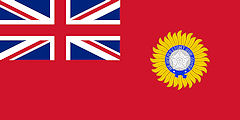
Bangkok: Gründung einer Indian Association of Siam.
1930
Es erscheint der Roman:
ดอกไม้สด [Dok Mai Sot, i.e. Buppha Kunchon - หม่อมหลวงบุปผา กุญชร] <1905 - 1963>: ความผิดครั้งแรก [Der erste Fehler]
Abb.: Einbandtitel einer Ausgabe von 1961
1930
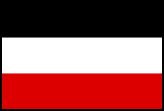
Das deutsche Firma Henschel & Sohn in Kassel erhält den Auftrag für sechs Lokomotiven für die Staatsbahnen Siams.
1930

Nai Sanan Sangkha Canta kommt nach Deutschland und erwirbt bei der Deutschen Verkehrsfliegerschule GmbH das Fliegerzeugnis A und B.
1930

Es erscheint:
Smith, Malcolm Arthur <1875 - 1958>: The Reptilia and Amphibia of the Malay Peninsula from the Isthmus of Kra to Singapore : a supplement to Dr. G.A. Boulenger's Reptilia and Batrachia, 1912. -- Singapore : Govt. Print. Office, 1930. -- 149 S. -- ´(Bulletin of the Raffles Museum ; no. 3)
"Malcolm Arthur Smith (1875, New Malden, Surrey - 1958, Ascot) was a herpetologist and physician working in the Malay Peninsula. Early life
He was interested in reptiles and amphibians from an early age. After completing a degree in medicine and surgery in London in 1898, he left for the then Kingdom of Siam (today Thailand) as a doctor to the British Embassy in Bangkok.
WorkHe went on to become the physician in the royal court of Siam and was a close confidant and a doctor to the royal family.[1] He published his observations on the reptiles and amphibians during his stint there and was in regular correspondence with Boulenger at the Natural History Museum, London. He left in 1925 to continue his studies at the museum in London.
He was the founder and president of the British Herpetological Society which operated from within the Linnean Society."
[Quelle: http://en.wikipedia.org/wiki/Malcolm_Arthur_Smith. -- Zugriff am 2015-04-10]
1930

Es erscheint:
Cook, Edward <1881 – 1955>: The building of modern Siam. -- In: Asiatic Review 27, 88 (1930). -- Der Verfasser ist britischer Finanzberater in Siam
""This is not to say that among the Siamese political consciousness does not exist; but is subordinated to a deep affection and reverence for their dynasty and a firm resolve not to allow their country to be contaminated by the virus of Moscow or Canton. Certainly, I have myself not noticed, even among the younger Siamese, any desire whatever for a wholesale or premature importation of political institutions on Western lines. They have observed the discount at which democratic government, as previously understood, now stands in so many countries. They have watched with great interest the Indian experiment and are not impressed by its success. . . 76
Thus, Sir Edward concluded, while it was impossible to predict future political developments, the character of the Thai, their religion, their national independence and their high standard of living relative to some parts of Asia,
"do not constitute a favourable breeding-ground for revolutionaries, and it seems likely that any changes which may occur will be of slow growth and will bring no abrupt breach of continuity with the past"."
[Quelle: Batson, Benjamin Arthur <1942 - >: The end of the absolute monarchy in Siam. -- Singapore : Oxford Univ. Pr., 1984. -- 349 S. : Ill. ; 22 cm. -- (Southeast Asia publications series ; no. 10). -- ISBN 0-19-582612-4. -- S. 146]
1930

Es erscheint
Kornerup, Ebbe <1874 - 1957>: Paradies Siam. -- Berlin : Safari, 1930. -- 252 S. : Ill. -- Originaltitel: Siam : illustreret efter fotografier, omslagstegningen af forfatteren (Kopenhagen 1928)
Abb.: Umschlagtitel der dänischen Ausgabe 1928
1930

Es erscheint:
Maugham, W. Somerset (William Somerset) <1874-1965>: The gentleman in the parlour; a record of a journey from Rangoon to Haiphong. -- London : Heinemann, [1930]. -- 276 S. ; 22 cm.Darin beschreibt Maugham seine Reise Yangon - Madalay - Shan Staaten - Bangkok - Haiphong
Abb.: Umschlagtitel
1930

Großbritannien löst das Southern Bureau des Komintern (Коммунистический интернационал - Коминтерн, 3-й Интернационал) in Hong Kong (香港) auf. Das Bureau war zuständig für die Verbindung mit den kommunistischen Parteien Südostasiens.
1930ff.

Japan: Periode des Dunklen Tals (kurai tanima, 暗い谷間): eine Periode, die geprägt ist von wirtschaftlicher Not, 2Government by assasination", Komplotten, Putschversuchen, Mordanschlägen auf politische Gegner.
1930

Dresden (Deutschland): erste bekannte Geschlechtsangleichende Operation (Sex reassignment surgery): innert zwei Jahren wandelt der Gynäkologe Kurt Wanekros in fünf Operationen einen Mann zur Frau um, die Patientin stirbt 1931-09 kurz nach der letzten Operation. Thailand wird ein Zentrum für Geschlechtsangleichende Operationen werden.
Abb.: Reklame für Geschlechtsangleichende Operationen, 2013
[Bildquelle: http://www.aestheticsurgerythailand.com/tag/gender-reassignment-surgery-thailand/. -- Zugriff am 2013-10-31. -- Fair use]
1930-01-14
Das Königspaar eröffnet das neue Gebäude der Chinese Chamber of Commerce (heute Thai-Chinese Chamber of Commerce) (泰国中华总商会, หอการค้าไทย-จีน) in der Sathorn Road (ถนนสาทร).
Abb.: Lage der Sathorn Road (ถนนสาทร)
[Bildquelle: OpenStreetMap. -- Creative Commons Lizenz (Namensnennung, share alike)]
Abb.: Chinese Chamber of Commerce, Sathorn Road
1930-04/05

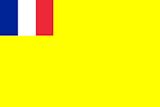
Staatsbesuch des Königspaars in Französisch-Indochina. Regent während der Abwesenheit des Königs ist Prince Paribatra Sukhumbhand, Prince of Nakhon Sawan (สมเด็จพระเจ้าบรมวงศ์เธอ เจ้าฟ้าบริพัตรสุขุมพันธุ์ กรมพระนครสวรรค์วรพินิต, 1881 - 1944). Der König ist davon beeindruckt, wie die Vietnamesen fähig sind, mit den Chinesen zu konkurrieren.
In Le monde colonial illustrè erscheint dazu ein Artikel: Siam et Indochine : les résultats politiques d'une visite royale (Rama VII lässt den Artikel ins Englisch übertragen und bei den Kabinettsmitgliedern verteilen):
"At the time when bolshevism makes tremendous efforts of propaganda in the Far East, it is reasonable that the settled powers should think of realizing a union of forces of the same nature against revolutionary actions." [Übersetzung: Batson, Benjamin Arthur <1942 - >: The end of the absolute monarchy in Siam. -- Singapore : Oxford Univ. Pr., 1984. -- 349 S. : Ill. ; 22 cm. -- (Southeast Asia publications series ; no. 10). -- ISBN 0-19-582612-4. -- S. 169]
1930-04-19

Premiere des US-Revue-Films "King of Jazz" mit Paul Whiteman (1890 - 1967) und seinem Orchester. Wirkt stilbildend, auch für Thai-Filme
Abb.: Filmplakat
[Bildquelle: Wikimedia. -- Fair use]
1930-04-20 - 1930-09-07
Prinz Damrong Rajanubhab (สมเด็จพระเจ้าบรมวงศ์เธอ พระองค์เจ้าดิศวรกุมาร กรมพระยา ดำรงราชานุภาพ, 1862 - 1943) besucht zusammen mit zwei Töchtern eine Europareise an.

Während des größten Teils seines Europaaufenthalts ist der Prinz Gast des Leiters der East asiatic & Co, Kopenhagen, Herrn Anderson. Herr Anderson finanziert auch die Hin- und Rückreise.
"Dazu bemerkte die deutsche Gesandtschaft aufmerksam, dass unter den Begleitern des Prinzen Damrong sich auch der Däne, Herr [P. I. E.] Warming, befände. Herr Warming, der nach Angaben der Gesandtschaft sich bereits annähernd 25 Jahre in Siam als Sachverständiger und Berater für das Polizei- und Gendarmeriewesen aufgehalten habe, habe auch auf diese Weise die siamesische Staatsangehörigkeit und den Namen „Phraya Bejra Indra" [พระยาเพชรอินทร] erworben. Von seinem Aufgabenbereich her sei ihm während des Kriegs die Sorge um die weiblichen deutschen Staatsangehörigen übertragen worden, gegenüber denen er „nach allgemeinem Urteil" wenig entgegenkommend gewesen sei und unnötig den Frauen die Situation erschwert habe. Herr Warming, so die Gesandtschaft, „handelte damit gewissermaßen päpstlicher als der Papst, denn die eingeborenen siamesischen Stellen verfuhren in vieler Hinsicht weitherziger als er. Darum kann auch nicht zu seiner Entschuldigung angeführt werden, dass er den Deutschen nicht als neutraler Däne, sondern als siamesischer Beamter gegenüberstand...".
Herr Warming habe sich aber bemüht, den Deutschen seit deren Rückkehr nach Siam mit großer Liebenwürdigkeit entgegenzukommen, doch immerhin sei unter den in Siam lebenden Deutschen die Verstimmung gegen ihn noch nicht verschwunden."
[Quelle: Catthiyakorn Sasitharamas [คัททิยากร ศศิธรามาส]: Die deutsch-thailändischen Beziehungen in der Zeit der Weimarer Republik bis zum Ende des Zweiten Weltkriegs. -- Hamburg : Kovač, 2012. -- 346 S. ; 21 cm. -- (Schriftenreihe Schriften zur Geschichtsforschung des 20. Jahrhunderts ; Bd. 4). -- ISBN 978-3-8300-6361-2. -- Zugl.: Hamburg, Univ., Diss., 2012. -- S. 119, Anm. 145. -- Fair use]
Prinz Damrong besucht;
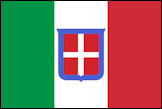
- Italien

- den Vatikan
Prinz Damrong Rajanubhab (สมเด็จพระเจ้าบรมวงศ์เธอ พระองค์เจ้าดิศวรกุมาร กรมพระยา ดำรงราชานุภาพ, 1862 - 1943) wird von Papst Pius XI. (1857 - 1939) im Vatikan empfangen.
Abb.: Prinz Damrong Rajanubhab (สมเด็จพระเจ้าบรมวงศ์เธอ พระองค์เจ้าดิศวรกุมาร กรมพระยา ดำรงราชานุภาพ) wird von Papst Pius XI. im Vatikan empfangen.
Abb.: Lage des Vatikan
[Bildquelle: OpenStreetMap. -- Creative Commons Lizenz (Namensnennung, share alike)]

Frankreich

Großbritannien

Belgien
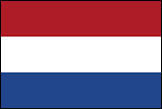
Niederlande
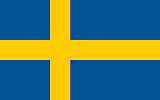
Schweden

Dänemark

Deutsches Reich (1930--07-23 - ???)
"Von Dänemark aus kamen die adligen Gäste am 23. Juli 1930 in Berlin an, wo sie dann von hohen Beamten des Auswärtigen Amts und der siamesischen Gesandtschaft in Berlin empfangen wurden. Gleich am nächsten Tag wurde ihnen trotz des unoffiziellen Charakters ihres Besuchs die Gelegenheit gegeben, den Reichspräsidenten [Paul Ludwig Hans Anton von Beneckendorff und von] Hindenburg, der seinerseits die Gäste sehr herzlich empfing, zu besuchen. Am Freitag, den 25. Juli 1930, stattete Prinz Damrong dem Berliner Völker[kunde]museum einen Besuch ab. Dabei bemerkte der Prinz in seinem Tagebuch, dass das Museum sehr viele Ausstellungsstücke aus Zentralasien beherberge und er dem Direktor geholfen habe, die aus Siam erworbenen Bücher zu registrieren.
Bis 3. August 1930 blieben die hohen siamesischen Gäste in Berlin, wobei sie neben den Erwähnten Aktivitäten noch Gelegenheit fanden, vor allem den Radiohersteller Telefunken, den Reichstag, die Charlottenburger und Potsdamer Schlösser, den Filmmacher Ufa sowie verschiedene Museen zu besuchen.
Nach ihrem Besuch in der Landeshauptstadt reisten die hohen Gäste weiter nach Hamburg, wo sie am Nachmittag des 3. August 1930 ankamen und direkt am Hauptbahnhof vom Direktor des Ostasiatischen Vereins, Herrn Mohr [Friedrich Wilhelm Mohr, 1881 – 1936], empfangen wurden. Da das siamesische Konsulat in Hamburg zu dieser Zeit - wie schon erwähnt, wurden manche siamesische Konsulate in Deutschland aus finanziellen Gründen bereits 1929 geschlossen - noch bestand, wurden Prinz Damrong und die Prinzessinnen von dem siamesischen Generalkonsul in Hamburg, Herr [Martin] Pickenpack, am 4. August 1930 zum Mittagsessen eingeladen. Anschließend folgte der Besuch der hohen Gäste unter Begleitung von Herrn Mohr in Hagenbecks Tierpark, der des Prinzen Tagebuch zufolge neben der normalen Tierhaltung vor allem Seehunde und Löwen für Zirkuszwecke züchtete.
Wie bei dem Besuch des Prinzen Purachat ein Jahr zuvor wurden Prinz Damrong und seine Töchter am 5. August 1930 von dem Hamburger Bürgermeister im Rathaus empfangen, woran sich ein Mittagsessen und ein Besuch beim Fürsten Bismarck in Friedrichsruh anschloss.
Am nächsten Tag statteten die hohen siamesischen Gäste dem Hamburger Hafen und mit diesem dem mit dem Norddeutschen Lloyd vereinten Hamburg-Amerika Werk, einen Besuch ab und reisten abends, gegen 23 Uhr unter warmem Abschied von Hamburg statt wie geplant nach Dresden und München in Richtung Holland ab."
[Quelle: Catthiyakorn Sasitharamas [คัททิยากร ศศิธรามาส]: Die deutsch-thailändischen Beziehungen in der Zeit der Weimarer Republik bis zum Ende des Zweiten Weltkriegs. -- Hamburg : Kovač, 2012. -- 346 S. ; 21 cm. -- (Schriftenreihe Schriften zur Geschichtsforschung des 20. Jahrhunderts ; Bd. 4). -- ISBN 978-3-8300-6361-2. -- Zugl.: Hamburg, Univ., Diss., 2012. -- S. 125f. -- Fair use]

Niederlande

Schweiz

- Italien
1930-04-30

Auflösung der South Seas Communist Party und Bildung der Communist Party of Malaya / 马来亚共产党 / Parti Komunis Malaya. Sie ist für Malaya und Singapur aber auch für Siam zuständig.
Abb.: Plakat 50 Jahre Communist Party of Malaya
[Fair use]
1930-05
Missernte
1930-05-01
14-Punkt-Programm des "Communist Workers Committee of Siam" fordert u.a. ein 3-8-System: 8 Stunden Arbeit, A Stunden Studium, 8 Stunden Ruhe. Außerdem Aufruf zum Sturz der Monarchie.
1930-05-01
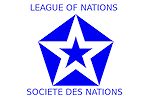
Es erscheint:
Documents relatifs à l'organisation d'un régime d'Union fédérale européenne / Société des Nations. -- Genève : Société des Nations, 1930. -- Darin ist der Briand-Plan für ein Vereintes Europa enthalten.

Der Völkerbund schickt ein Exemplar an die Regierung Siams. Rama VII. kommentiert, dass Japan ähnlich an "United States of Asia" denken könnte. Er glaubt aber, dass wegen der vielen Schwierigkeiten einer solchen Einigung Asiens, er diese nicht mehr erleben werde.
1930-05-12

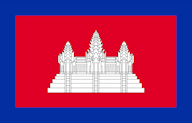
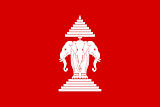
Gründung von L’Institut Bouddhique de Phnom Penh durch den König von Kambodscha, Preah Bat Sisowath Monivong (ព្រះបាទ ស៊ីសុវតិ្ថ មុនីវង្ស, 1875 - 1941), den König von Laos, Sisavang Phoulivong (ເຈົ້າມະຫາຊີວິດສີສະຫວ່າງວົງ, 1885 - 1959) den französischen Genralgouverneur von Indochina, Pierre Pasquier (1877 - 1934) und George Cœdès (1886 - 1969), den Direktor der École française d'Extrême-Orient in Hanoi. Das Institut soll den Einfluss des siamesischen buddhistischen Ordens auf den buddhistischen Orden in Laos und Kambodscha verringern.
Im gleichen Jahr Gründung der Commission des moeurs et des coutumes mit Sitz im Institut.
Abb.: L’Institut Bouddhique de Phnom Penh, Phnom Penh, 2009
[Bildquelle: Sundgauvien / Wikipedia. -- GNU FDLicense]
Abb.: Lage von Phnom Penh
[Bildquelle: Bartholomew, J. G. <1860 - 1920>: A literary & historical atlas of Asia. -- London, o. J.]
1930-05-15


Es erscheint:
นรินทร์ ภาษิด [Narin Phasit] <1874 - 1950>: ครุนรินทร์ ภาษิด ที่คิดเปิดเชิดชูประเดศชาติศาสนา มหากษัตริย์รัชกาลที่ ๗. -- Bangkok : Chiang Heng Long, 1930-05-15. -- "The hidden qualities of Narin Phasit and his plans to uplift nation, religion, and seventh king of the Rattankosin dynasty" (Peter Koret)
"A fourth major criticism of Narin in his revival of a female line of monks, encapsulated in the words of King Prachatipok, who writes in answer to a petition by Narin: / Novizinnen] because they are of no use whatsoever. We feel they will neither be successful in their implementation nor in any way serve to uplift the honor of females in our kingdom."I do not have faith in the idea of reviving a female line of monks because I do not believe it is likely to be successful or have any consequences that are beneficial in nature. The fact that the female line of monks died out a long time ago should be understood to mean that either they were no longer held in any faith by the public or else this type of ordination brought about negative consequences and as a result disappeared. If a line of female monks were truly a good idea, they would probably still exist at present. Even were they to have disappeared temporarily, there should have been someone who would have thought of reviving them a long time ago. The Buddhist era has already reached 2472 years. During this time there have been many Buddhists of great intellect. However, there have been none that have thought of reviving the female line of monks to the point of successfully reestablishing the tradition. For this reason, I do not support such a revival."
"It is our belief that the petitioner should no longer continue in his struggles. He should rather pacify his emotions and become intent on acting in what is truly a moral manner, which is far more noble of an aim than to seek out a name and reputation in a highly inappropriate manner.
In acting in such a fashion, rather than being admired, the petitioner has only come to be ridiculed and looked upon in great disrespect. Therefore, he should desist in his ideas concerning bhikkhuni [ภิกฺขุณี / Nonnen] and samaneri [สามเณรี
[Quelle: Koret, Peter: The man who accused the king of killing a fish : the biography of Narin Phasit [นรินทร์ ภาษิด] of Siam (1874-1950). -- Chiang Mai : Silkworm, 2012. -- 397 S. : Ill. ; 21 cm. -- ISBN 9786162150432. -- S. 188, 203. -- Fair use]
"Once I have returned the contributions of the faithful I will without hesitation leave the kingdom in which I was born in order that I may travel far and wide and investigate Buddhism as it is practiced throughout the world. Only then will I be able to make an informed comment on the criticism of foreigners that Buddhist monks do not have a good understanding of their religion as it is actually presented in the Tripitaka scriptures. The Burmese are less knowledgeable than the Sri Lankans, and the Thai and Khmer know preciously little. Upon reflection I cannot help but feel the greatest of shame in the name of the Thai as a nation." [Übersetzung: Koret, Peter: The man who accused the king of killing a fish : the biography of Narin Phasit [นรินทร์ ภาษิด] of Siam (1874-1950). -- Chiang Mai : Silkworm, 2012. -- 397 S. : Ill. ; 21 cm. -- ISBN 9786162150432. -- S. 206. -- Fair use]
1930-05-15

Ellen Church (1904 - 1965) tritt als erster weiblicher Flugbegleiter ("sky girl", Stewardess) ihren Erstflug bei der US-Fluglinie Boeing Air Transport an.
"The stewardesses, or "sky girls" as BAT called them, had to be registered nurses, "single, younger than 25 years old; weigh less than 115 pounds [52 kg]; and stand less than 5 feet, 4 inches tall [1.63 m]". In addition to attending to the passengers, they were expected to, when necessary, help with hauling luggage, fuelling and assisting pilots to push the aircraft into hangars. However, the salary was good: $125 a month." [Quelle: http://en.wikipedia.org/wiki/Ellen_Church. -- Zugriff am 2013-10-15]
Abb.: Stewardess, Thai Airways International, 2013
[Bildquelle: Yahoo Finance Canada. -- http://www.flickr.com/photos/98436574@N03/9211475320. -- Zugriff am 2013-10-15. -- Creative Commons Lizenz (Namensnennung)]
1930-05-16

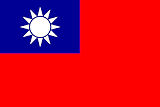
Vertrag zwischen Frankreich und der nationalchinesischen Regierung in Nanking (南京) über Indochina.
Abb.: Lage von Nanking (南京)
[Bildquelle: OpenStreetMap. -- Creative Commons Lizenz (Namensnennung, share alike)]
1930-07-05
Gründung der Santibal Police (Special Branch Police) (ตำรวจสันติบาล)
Abb.: ®Logo
1930-07-08

Die französischen Fluglinien Air Asie (gegr. 1926) und Air Union Lignes d’Orient (gegr. 1927, seit 1923: Messageries Transaeriennes) fusionieren zu Air Orient. Die Fluglinie wird den Personen und Postverkehr wöchentlich von Marseille nach Saigon (französisch Indochina; Flugzeit 11 Tage) und nach Phnom Pen (französisches Protektorat Kambodscha) aufnehmen. Bangkok wird von ihr ebenfalls angeflogen. 1933-10-07 geht die Linie in Air France auf.
1930-07-13
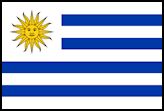
Uruguay: Erste Fußballweltmeisterschaft. 13 Mannschaften nehmen teil. Weltmeister wird Uruguay.
Abb.: Lage von Uruguay
[Bildquelle: CIA. -- Public domain]
1930-07-16
Bangkok Times meldet, dass die Siam Commercial Bank (ธนาคารไทยพาณิชย์) plant, in Korat (โคราช) eine Zweigstelle zu eröffnen. Die Bank hat bereits Zweigstellen in Thung Song (ทุ่งสง), Chiang Mai (เชียงใหม่, seit 1928) und Lampang (ลำปาง, seit 1930).
Abb.: Lage von Thung Song (ทุ่งสง), Chiang Mai (เชียงใหม่), Lampang (ลำปาง) und Korat (โคราช)
[Bildquelle: OpenStreetMap. -- Creative Commons Lizenz (Namensnennung, share alike)]
1930-07-24

Der deutsche Gesandte Rudolf Asmis (1879 - 1945) ans Auswärtige Amt:
"Die Gründung einer vom Militär unabhängigen Luftfahrtgesellschaft verbuchte der deutsche Gesandte als einen weiteren Fortschritt in der Luftfahrt Siams. ln seinem als „vertraulich" eingestuften Bericht schrieb er, dass Anfang Juli 1930 sich in Siam eine Luftfahrtgesellschaft gebildet habe, die das Ziel habe, Post und Passagiere auf dem Luftwege auf kommerzieller Basis zu befördern. Das Kapital der Gesellschaft sei auf 600.000 Ticals festgesetzt und in 6.000 Anteile zu je 100 Ticals zerteilt, wobei der erste Ingenieur und Stellvertretende Manager der „überwiegend belgischen Siam Electric Corporation",23" vier Siamesen, darunter der bekannte siamesisch-chinesische Industrielle, Phraya Phakdi Nóraset [พระยาภักดีนรเศรษฐ, 1872 - 1945], ferner der Franzose und norwegische Generalkonsul H.G. Manod sowie der amerikanische Berater im Post- und Telegraphenamt Otto Praeger [1871 - 1948] als Gründer fungieren sollten. Weiter berichtete der deutsche Gesandte, dass er noch am Berichterstattungstag, also am 24. Juli 1930 „vertraulich" von zuständiger Seite gehört habe, dass in erster Linie amtliches siamesisches sowie französisches Kapital an der Gründung beteiligt sei. Die genannten Gründer waren laut Dr. Asmis, „sogenannte Strohmänner", die doch nicht mehr als je 100 Ticals eingezahlt hätten. Laut des Gesandten sei ihm noch gesagt worden, dass die siamesische Regierung vor der Gefahr gestanden habe, aus der internationalen Luftlinie Paris-Indochina - denn Siam hatte das Pariser Luftverkehrsabkommen vom 13. Oktober 1919 mit unterzeichnet und ratifiziert - ausgeschlossen zu werden. So habe die siamesische Regierung keine andere Wahl gehabt, als diese Gründung einer privaten Luftliniengesellschaft mit starkem französischem Kapital zu gestatten. Dr. Asmis gab außerdem an, dass seiner Quelle zufolge die Fluggesellschaft das siamesische Zwischenstück der internationalen Linie befliegen solle, ob sie sich zukünftig weiter ausbauen werden würde, bleibe abhängig vom wirtschaftlichen Erfolg des Unternehmens abzuwarten. Ferner betonte Dr. Asmis, dass der militärische Luftdienst Siams sowie der zivile Luftdienst innerhalb des Landes von der Gründung dieser Luftliniegesellschaft nicht berührt werden würde. So hieß es auch, dass innerhalb des siamesischen Luftdienstes - sei er militärisch oder zivil - die Regierung in Bangkok bei der Vergebung von Lieferungen unabhängig sei, während bei der neu gegründeten Luftliniegesellschaft der französische Einfluss dann entscheidend sein dürfte."
[Quelle: Catthiyakorn Sasitharamas [คัททิยากร ศศิธรามาส]: Die deutsch-thailändischen Beziehungen in der Zeit der Weimarer Republik bis zum Ende des Zweiten Weltkriegs. -- Hamburg : Kovač, 2012. -- 346 S. ; 21 cm. -- (Schriftenreihe Schriften zur Geschichtsforschung des 20. Jahrhunderts ; Bd. 4). -- ISBN 978-3-8300-6361-2. -- Zugl.: Hamburg, Univ., Diss., 2012. -- S. 138f. -- Fair use]
1930-07-30

Gründung von The Royal Thai Marine Corps (นาวิกโยธินแห่งราชอาณาจักรไทย)
Abb.: ®Logo
[Bildquelle: Wikipedia]
"The Royal Thai Marine Corps (Thai: นาวิกโยธินแห่งราชอาณาจักรไทย) are the marines of the Royal Thai Navy (กองทัพเรือ), the corps was founded in 1932 when the first battalion was formed with the assistance of the USMC (United States Marine Corps). It expanded to a regiment in 1940 and was in action against communist guerrillas throughout the 1950s and 1960s. During the 1960s the USMC again helped with expansion to a brigade. The RTMC saw further action on the Malaysian border in the 1970s, where it then expanded two brigades."
[Quelle: http://en.wikipedia.org/wiki/Royal_Thai_Marine_Corps. -- Zugriff am 2013-05-13]
Abb.: Royal Thai Marine Corps (นาวิกโยธินแห่งราชอาณาจักรไทย), 2005
[Bildquelle: US-DoD / Wikimedia. -- Public domain]
1930-08

Es erscheint
Freeman, Andrew A. <1900 - >: A Tabloid In Bangkok. -- Part I. -- In: Asia <Concord>. -- 1930-08. -- Part II erscheint ebd. 1930-09
Abb.: Einbandtitel
"The Daily Mail's sole aim is to bring Siam before the world and to bring the world to Siam." [Zitiert in: Charivat Santaputra [จริย์วัฒน์ สันตะบุตร]: Thai foreign policy 1932-1946. -- Bangkok : Thai Khadi Research Institute, Thammasat University, 1985. -- 465 S. ; 21 cm. -- ISBN 974-335-091-8. -- S. 102]
1930-08 - 1932-02-04

Dr. med Louis Schapiro (1886 - 1932) ist im Auftrag der Rockefeller Foundation Gesundheitsberater der Regierung. Er
- verbessert die städtische Wasserversorgung
- entwickelt ein Modell-Gesundheitszentrum und eine Modell-Gesundheitsausbildungsstation
- gründet eine Hebammenschule
- macht eine Untersuchung über das Brutverhalten von Moskitos
1930-08-13


Laut Bericht der deutschen Gesandtschaft hat Siam folgende Aufträge erteilt:
- 6 Diesellokomotiven mit je 450 PS bei Sulzer AG, Winterthur (Schweiz)
- 6 Diesellokomotiven mit je 900 PS bei Frichs AG, Aarhus (Dänemark)
1930-09

Durch amtliche Verlautbarung wird bekanntgegeben, dass der König zweitweise sein Augenlicht durch Grauen Star verloren hat. Der König plane im Herbst 1931 in die USA zur Augenoperation zu reisen. Anschließend wolle er nach Kanada reisen.
1930-09
Law of Cinema Censorship (Cinema Act 1930) (bis 2007 vollumfänglich in Kraft)
"All films, VCDs and DVDs are placed under scrutiny of the Censorship Board prior to public release, as stipulated by the Film Act of 1930, which remains in effect as of 2007. The first board of censors included both men and women and was drawn from the ranks of aristocracy, the civil service and the police. Each film passed by the censors had to include a stamp on each reel, and each item of printed advertising had to contain the stamp, too. The National Police was responsible for screening films and videos until September 2005, when the government's Ministry of Culture took over the function. Every VCD and DVD sold for home viewing must bear a stamp that it has passed the Censorship Board.
On some VCDs and DVDs produced in Thailand, the censors sometimes take a hard line against depictions of nudity, sex, smoking, the presence of alcohol and guns being pointed at people, images that are forbidden on broadcast television. In other instances, violent acts might pass through uncut, but sex and nudity will be edited out.
Before the digital age, scissors and petroleum jelly were the tools of the trade for censors. Today the offending images are blurred out electronically. The effect of pixelization is so pervasive that the practice has been satirized in films, including 2004's action comedy, Jaew or M.A.I.D., as well as the zombie comedy, SARS Wars.
Imported DVDs are generally not altered by the Thai authorities, though the Ministry of Culture's watchdogs do ban items, or at least strongly encourage retailers to not carry them. From the time the Ministry of Culture took over the censorship board until March 2006, about 40 VCD or DVD titles were banned, though a list of the banned items was not made available.[17]
In 2007, the independent film, Syndromes and a Century (แสงศตวรรษ) was to undergo cuts before public release in Thailand. The censors objected to depictions of a Buddhist monk playing guitar, a physician kissing his girlfriend, some doctors drinking whisky in a hospital conference room and some monks playing with a remote-control flying saucer. Director Apichatpong Weerasethakul (อภิชาติพงศ์ วีระเศรษฐกุล, 1970 - ) would not make the cuts and withdrew his film from release in Thailand. It had previously screened in other countries uncut.[18]
After the controversy over Syndromes and a Century, the Free Thai Cinema Movement started to gain momentum in late April 2007. A petition signed by artists and scholars was submitted to the National Legislative Assembly, which was considering a new motion picture ratings system. The proposed system, passed by the military-appointed National Legislative Assembly proved controversial as well, as it would not imposes ratings structure but also keeps censorship in place.[19]"
[Quelle: http://en.wikipedia.org/wiki/Cinema_of_Thailand#Censorship. -- Zugriff am 2011-11-23]
1930-09 - 1932

Der Brite Edmund Leo Hall-Patch (1896 - 1975) ist Finanzberater der Regierung Siams.
1930-09

Die US-Firma RCA Victor bringt die erste Vinyl-Langspielplatte (Program Transcription Disc) heraus. In Thailand wird sich die Schallplatte nie richtig durchsetzen.
Abb.: Thailändische Vinyl-Schallplatte
1930-09 - 1930-10
Preisverfall von Reis infolge der Wirtschaftskrise
Abb.: Preis (Baht) pro Kwian (เกวียน, 2000 l) Reis in Bangkok, Mai bis Dezember 1930
[Datenquelle: Rural economic survey 1930 - 1931. -- S. 186f..]
1930-09-09

Die Zeitung Daily Mail (เดลิเมล์) über die Ordination von Narin Phasit (นรินทร์ ภาษิด, 1874 - 1950) zum Mönch:
"Narin [นรินทร์ ภาษิด, 1874 - 1950] exercises the greatest discipline in his observance of the Buddhist code of conduct. For example, he has never agreed with the contemporary practice in which monks are allowed to come into contact with money. He is to practice as strictly as once he had preached. In the course of a day, only once before noon does he partake of a meal. It is of course an absolute certainty that Narin would never be able to survive at any monastery in our kingdom other than his own Nariwong Temple, and that is where he resides.... He dresses in the yellow robes of a monk and although he has not removed his eyebrows, his head is otherwise completely shaven. In appearance, therefore, he is identical to a Buddhist religious man in every aspect. As for his speech and behavior, however, that remains pure Narin...
Late in the morning on the day of his ordination, the governor of Nonthaburi [นนทบุรี] invited Narin—or rather Phiksu Thitthathammo [ฐิตธมฺโม]—into his office to establish the truth of what he had done. Narin willingly came to see him. When Narin arrived at the governors residence, the governor asked:
"Have you truly ordained, then? "
"Yes. "
The governor spoke further. "You act as if you were a Bolshevik. "
Narin answered. "Well, there is at least one good thing that can be said about the Bolsheviks. If there were truly nothing to them, tell me, how could they have caused the collapse of religion in their country? During the time of my ordination, I would like to go and see what is so good about the Bolsheviks. "
The governor continued to ask: "Is it true that you eat only a single meal in your ordained state? "
"Yes. One meal per day. Going abroad is certainly not an easy matter, and it is impossible to guarantee that there will be food in sufficient quantities. Were a monk to stuff himself with food, he would more than likely run into difficulties. "
The governor spoke further, "In that case, you should follow the doctrine of ‘Manna from Heaven. ’ But tell me, in going abroad why is it necessary for you to ordain? "
"In order that I do not have to spend a lot of my money wastefully overseas. ""
[Übersetzung: Koret, Peter: The man who accused the king of killing a fish : the biography of Narin Phasit [นรินทร์ ภาษิด] of Siam (1874-1950). -- Chiang Mai : Silkworm, 2012. -- 397 S. : Ill. ; 21 cm. -- ISBN 9786162150432. -- S. 21f.. -- Fair use]
1930-09-17
Gründung des Rotary Club Bangkok, des ersten Rotary Clubs Siams.
Abb.: Tagesordnung der ersten Sitzung
[Bildquelle: http://rotaryclubofbangkok.org/rotaryBkk2013/?page_id=17. -- Zugriff am 2013-11-24. -- Fair use]
"The Rotary Club of Bangkok is the first Rotary club to be established in Thailand. On September 17, 1930, the first and organizing meeting of RC Bangkok was held at Phya Thai Palace, Bangkok attended by 69 founding members representing 15 nationalities. H.R.H. Prince Purachatra Krom Phra Kampaeng Bejra [พระเจ้าบรมวงศ์เธอ พระองค์เจ้าบุรฉัตรไชยากร กรมพระกำแพงเพ็ชรอัครโยธิน, 1881 - 1936] was elected the Club’s Charter President. On November 28, 1930, RC Bangkok received Charter No. 3392 from Rotary International." [Quelle: http://rotaryclubofbangkok.org/rotaryBkk2013/?page_id=17. -- Zugriff am 2013-11-24. -- Fair use]
1930-10
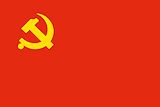
Festnahme des des chinesischen kommunistischen Funktionärs Liao A-ngow (aka. Ngow Sengchin aka. No Diji, 1904 - ). Er wird zu 15 Jahren Gefängnis und darauffolgende Ausweisung verurteilt. Auf seine Festnahme folgen Polizeiaktionen an 13 Orten in Bangkok sowie in drei weiteren Provinzen. Insgesamt werden 31 Kommunisten festgenommen,
1930-10-21

Bangkok Daily Mail:
"Owing to the failure of the public in general to give proper attention and due respect to His Majesty the King when the Siamese National Anthem is being played after performances in the local entertainment halls, H.R.H. the Minister of Interior has issued an order to police authorities to remedy the situation. It has been noticed that when the band strikes up the National Anthem some persons seem to pay little attention to it, while others walk out of the hall, quite oblivious to the patriotic custom. The police on duty have been instructed to remind the public when the tune is being played, and to take down the names of the offenders in the case of government officials or military men."
1930-11
Es erscheint:
Siam : general and medical features / by the Executive Committee of the 8th Congress of Far Eastern Association of Tropical Medicine. -- Bangkok : Bangkok Times, 1930. -- 332 S. : Ill. ; 25 cm.
Abb.: Einbandtitel
Abb.: Königin Rambhai Barni (พันเอกหญิง สมเด็จพระนางเจ้ารำไพพรรณี พระบรมราชินี, 1904 - 1984)
[A.a.O., nach S. 16]
Abb.: Kinder tanzen und singen für das Königspaar
[a.a.O., nach S. 278]
Abb.: Mitglieder des Höchsten Staatsrats:
- Prinz Narisara Nuvadtivongs (พลเอก สมเด็จพระเจ้าบรมวงศ์เธอ เจ้าฟ้ากรมพระยานริศรานุวัดติวงศ์, 1863 - 1947)
- Prinz Yugala Dighambara, Prinz von Lopburi (นายพลเอก สมเด็จพระเจ้าบรมวงศ์เธอ เจ้าฟ้ายุคลฑิฆัมพร กรมหลวงลพบุรีราเมศร์, 1882 - 1932)
- Prinz Paribatra Sukhumbandh, Fürst von Nakhon Sawan (สมเด็จพระเจ้าบรมวงศ์เธอ เจ้าฟ้าบริพัตรสุขุมพันธุ์ กรมพระนครสวรรค์วรพินิต, 1881 - 1944)
- Prinz Damrong Rajanubhab (สมเด็จพระเจ้าบรมวงศ์เธอ พระองค์เจ้าดิศวรกุมาร กรมพระยาดำรงราชานุภาพ, 1862 - 1943)
- Kitiyakara Voralaksana, Prinz of Chanthaburi (พระเจ้าบรมวงศ์เธอ พระองค์เจ้ากิติยากรวรลักษณ์ กรมพระจันทบุรีนฤนาถ, 1874 – 1931)
[a.a.O., nach S. 22]
Abb.: Karte der Royal State Railways of Siam, 1930
[a.a.O., nach S. 130]
Abb.: Pfadfinder (ลูกเสือ) in Nakhon Ratchasima (นครราชสีมา)
[a.a.O., nach S. 180]
Abb.: Lage von Nakhon Ratchasima (นครราชสีมา)
[Bildquelle: OpenStreetMap. -- Creative Commons Lizenz (Namensnennung, share alike)]
Abb.: Kindergarten
[a.a.O., nach S. 180]
Abb.: Abzeichen der Gesundheitsbeamten: สาธารณสุข
[a.a.O., S. 225]
Abb.: Bangkok Waterworks supply canal
[a.a.O,, S. 247]
Abb.: Unterricht im Zähneputzen
[a.a.O., nach S. 276]
Abb.: Schulunterricht in Erster Hilfe
[a.a.O., nach S. 276]
Abb.: Plakat zur Malaria-Bekämpfungยุงร้ายกว่าเสือตั้งพันเท่า - Ein Moskito ist tausendmal tödlicher als ein Tiger
ในกรุงสยาม เสือกัดคนตายปีละ๕๐คน - In Siam töten Tiger jährlich 50 Personen
ยุงกัดคนเป็นไข้ตายปีละ ๕๐.๐๐๐ คน - Moskitos verursachen jährlich 50.000 Tote[a.a.O., nach S. 210]
Abb.: Freiluftkino zur Propagierung der Cholera-Impfung
[a.a.O., nach S. 218]
Abb.: Ärzte und Krankenschwestern der Erste-Hilfe-Reserve des Roten Kreuzes
[a.a.O., nach S. 274]
"The work of training women nurses was at first very difficult, because to use unmarried women to care for sick persons who were not their relatives was thought to be improper. In any case according to the old idea women should nurse women, and men should nurse men. As a result of this belief together with the wrong idea about a hospital, the people did not properly support nursing, which was left largely to the ignorant. But since the Red Cross [สภาอุณาโลมแดง] Hospital came into existence, parents and guardians have seen the advantages that girls gain by becoming trained nurses, and each succeeding year more have come to study. The number of fully trained nurses up-to-date is 405. The number of Siamese nurses is small when compared proportionately with the number in other nations, that being due to the fact that the manners and customs of the Siamese are different from the manners and customs of European countries. In Siam the women confine themselves to the duties of the home, and have nothing to do with the opposite sex unless they be members of their own family. The Red Cross Society did try with success to combat this custom, and now we see young girls of good family enrolled in the Nurses’ Schools.
The 1916 the Red Cross made its first experiments in giving female nurses the charge of male patients. This was tried during day time only, but it failed because Siamese girls were so extremely bashful and timid in the presence of men that they were unable to carry the grave responsibility.
In 1918 the experiment was repeated with success. The parents and guardians of girls had been gradually changing their mode of training their children and protegees, in giving them more freedom in society and fuller social life in the home, in accordance with the spirit of the age. The senior nurses have for some years assumed the duties of sisters in complete charge of male wards, carrying out the physician’s instructions in important cases with full responsibility. Non-resident male patients are also attended by female nurses, while all nurses can do night duty in male wards.
The Queen Mother’s Midwifery School began affiliation in 1916 by sending second year student midwives to study and practise nursing in the Red Cress Nurses’ Training School. This was continued till 1926 when the Red Cross required a three years course in training nurses.
The training of male nurses was started by Siriraj Hospital [โรงพยาบาลศิริราช] in 1906. After a one year course eight passed the examinations and were given certificates. These male nurses were trained with the sole idea of working in the hospital. This project was given up altogether in 1925. The Red Cross Society also trained male nurses to become part of the Red Cross Hospital staff This plan too had to be changed, as it entailed great expense to the Red Cross Society and in time of emergency the Red Cross Society had no power to call them up in case they did not volunteer. The Red Cross Society came to an agreement with the Ministry of War to loan conscripts to the Red Cross Hospital when the men could complete their training as nurses in two years. Seven conscripts were at first sent annually to the Nursing School; and this number was later increased to forty annually. After two years training, the men are placed on the reserve and the Red Cross can call them up through the Army in case of emergency. The work of training male nurses in this way still goes on and about three hundred conscripts have now been trained.
The plan of the Red Cross Nurses’ Training School in giving a 3½ years course is to develop in the student the greatest possible practical efficiency and skill in the nursing care of patients and to provide her with scientific training and knowledge of the theory underlying the treatment of disease. This it is hoped will make her ministrations interesting and educationally profitable, besides giving her a firm and intelligent foundation upon which to base subsequent specialization in any form of nursing work. The students who have passed their final examination are enrolled in the Red Cross Volunteer Corps for the term of five years and are subject to emergency calls.
Those who have finished their training, can still continue on special work in the School as follows:
- Medical Nursing, .
- Surgical Nursing,
- Obstetrical and Gynaecological Nursing and Child Welfare
Up-to-date eighteen have passed the examination in the third subject. None have passed in the first or second subjects. This post-graduate work was started in 1922.
The Red Cross Society also sends young women to be trained abroad, to Manila, and to England in particular. The Nurses are sent for post-graduate study at Bedford College for Women, University of London, under the direction of the League of the Red Cross Societies. They take up various branches of study such as Public Health Nursing, Nursing Administration and Teaching in Schools of Nursing. Three have finished the course in Public Health Nursing and one is still there studying Administration and Teaching.
The Red Cross Nurses’ Training School, in the short period since its establishment, has made satisfactory progress. Through the combined efforts of the hospital staff and the administration, the best modern methods for the care of patients have been adopted, and the facilities and equipment required have' been generously provided. The instruction given in the classroom is good, and everything that can be desired in the way of library facilities is available. Students come from families that may be described as of the better class and of good financial standing. Their education now generally goes up to the 8th Secondary Standard [มัธยม ๘].
The Red Cross Society here also provides a post-graduate course in Public Health Nursing. As regards Public Health Nursing competent nurses were first sent out to help patients in their homes, and also to give prenatal and post-natal assistance as well as to do child-welfare work. The effort was so successful that it was decided to start a school for training Public Health nurses in Bangkok. The Public Health Nurses’ Training School began its work in 1924 with a six months course. There were eight graduates of the Red Cross Nurses’ Training School and of the Queen Mother’s School of Midwifery to start with, and up-to-date 45 nurses have completed the course and are fully qualified. The Government Department of Public Health also sends its nurses to affiliate with this school."
[a.a.O., S. 293 - 297.]
Abb.: Katastrophenhilfs-Station, Phra Phutthabat (พระพุทธบาท)
[a.a.O., nach S. 274]
Abb.: Lage von Phra Phutthabat (พระพุทธบาท)
[Bildquelle: OpenStreetMap. -- Creative Commons Lizenz (Namensnennung, share alike)]
Abb.: Sanitätseinheit des Militärs
[a.a.O., nach S. 262]
Abb.: Sukhumal Health Centre (สุขุมาลอนามัย), Bangkok
[a.a.O., nach S. 272]
Abb.: Krankenschwesternschule des Roten Kreuzes
[a.a.O., nach S. 292]
Abb.: Männerabteilung, Siriraj Hospital (โรงพยาบาลศิริราช)
[a.a.O., nach S. 322]
Abb.: Gebäude der Anatomie und Physiologie, Siriraj Hospital (โรงพยาบาลศิริราช)
[a.a.O., nach S. 182]
Abb.: Schwesternwohnheim, Siriraj Hospital (โรงพยาบาลศิริราช)
[a.a.O., nach S. 292]
"MEDICAL EDUCATION Siam has one medical school, the Faculty of Medicine of Chulalongkorn University [จุฬาลงกรณ์มหาวิทยาลัย
]. It is situated on the west bank of the Menam Chao Phya [แม่น้ำเจ้าพระยา] in the compound of Siriraj hospital [โรงพยาบาลศิริราช], some four miles from the University campus. As a Faculty of the University it is under the jurisdiction of the Ministry of Public Instruction.The teaching of medicine began at this hospital in 1889 (B. E. 2432), and the first class of nine members was graduated in the early part of 1893. The name of Medical School was officially given to the course of instruction in 1901. The course was three years in length until 1902 when it was increased to four. In 1911 it was made five years and in 1915 six years. In 1917 the School was amalgamated with the University as its Faculty of Medicine.
A reorganization of the School began in 1923, this being-made possible by Government appropriations, by local contributions, and by the co-operation of the Rockefeller Foundation. The changes included for a period of years the presence of six visiting Professors to organize the six major branches of the Faculty, namely,
- Anatomy,
- Physiology (including Biochemistry and Pharmacology),
- Pathology (including Bacteriology),
- Medicine and its specialties,
- Surgery and its specialties,
- Obstetrics and Gynecology.
Entrance requirements were raised to the 8th (final) Madhayom [มัธยม ๘] of the Government Secondary Schools with the addition of two years of college work in Physics, Biology, Chemistry and English. These two premedical years are given in the Faculty of Arts and Sciences, which is also being reorganized with the aid of visiting Professors. The four-year medical course is given at Siriraj hospital.
The building programme that is a part of the scheme of reorganization includes the erection at the University of science laboratories for the Faculty of Arts and Sciences, and laboratories of Anatomy, Physiology, Biochemistry, Pharmacology and Pathology for the medical school at Siriraj hospital. The old buildings of the hospital are also being replaced by new ones. An Administration building contains offices for the entire institution, record rooms for the hospital, a medical library of 2,100 volumes, a reading room containing 78 current medical journals, the out-patient department, the dispensary, and an assembly room seating 300 persons.
The Dean of the Faculty of Medicine is also the Director of Siriraj hospital. The other members of the administrative and clerical staffs of the school and hospital also are common to the two, which makes them from a business standpoint a single institution. The staffs of both laboratory and clinical departments of the Medical School are the corresponding staffs of the hospital. With the buildings of the two in close proximity in a small compound and the management and staffs identical, the hospital is used to the fullest extent in the clinical teaching of the school.
The curriculum for the four years of the medical course has a total of 4,620 hours and about 4,400 actual teaching hours are given. Sessions begin on May 17 and end about March 15. The year of 35 weeks is divided into three terms of 11, 11 and 13 weeks respectively, the lengths being determined by the occurrence of certain National holidays. The daily hours are 8 : 30 to 11 : 30 A. M. and 1 to 4 P. M. and on Saturday 8 : 30, to 11 : 30, giving a week of 33 hours.
Instruction is given under the six major branches and their specialities as before mentioned, and also in two departments not yet raised to faculty positions, namely,
- Roentgenology and
- Hygiene and Public Health.
The latter is for the present taught by a staff of five, two of the medical faculty and three physicians from the Department of Public Health in the Ministry of the Interior, who are permitted thus to aid in the instruction. The students thus get most of their teaching in this subject from men who are actively engaged in public health work.
Instruction in Anatomy and Physiology occupy the first year. The work in the former is based on the correlation of gross and microscopic anatomy and embryology in such a way that the three are given consecutively for each organ instead of making each into a group as usual. As the subjects of biochemistry and therapeutics are under the department of Physiology, they have been merged with it so that they are taught as parts of physiology instead of as separate subjects.
Pathology, with bacteriology and parasitology, largely occupies the second year, though anatomy and physiology are finished and medicine and surgery begun. Prevention of disease is emphasized. The clinical years are spent largely in the wards and out-patient department, the fourth year especially having a minimum of lectures.
Final examinations at the end of each year are given by the heads of departments and the grades reported to the Dean. These grades are considered individually at a meeting of the Faculty (of which the Dean is Chairman), that body deciding on promotion, reexamination, repetition of a year, or dropping from the school as the work of each student indicates.
Members of the teaching staff in all departments now number thirty, with several positions not yet filled. In addition there are six house officers and four student assistants.
Students average about twenty to the class. Women first began the study of medicine in Siam in 1929, the first and second year classes now having six. The ages of the men range from 17 to 24 years ; of the women from 19 to 22.
Graduates of the Faculty of Medicine (beginning with the session of 1928-9) are given the degree of M. B. ( Bachelor of Medicine). Provision is made whereby the holders of this degree may later, by meeting requirements laid down by the Faculty, obtain the degree of M. D."
[a.a.O., S. 182 - 184]
Abb.: Verwaltungsgebäude, King Chulalongkorn Memorial Hospital (โรงพยาบาลจุฬาลงกรณ์), Bangkok
[a.a.O., nach S. 312]
Abb.: Ambulanz, King Chulalongkorn Memorial Hospital (โรงพยาบาลจุฬาลงกรณ์), Bangkok
[a.a.O., nach S. 316]
Abb.: Hauptgebäude, St. Louis Hospital (โรงพยาบาลเซนต์หลุยส์), Bangkok
[a.a.O., nach S. 324]
Abb.: Kinderabteilung, St. Louis Hospital (โรงพยาบาลเซนต์หลุยส์), Bangkok
[a.a.O., nach S. 324]
Abb.: Hauptgebäude und Gebärklinik, The Bangkok Nursing Home (โรงพยาบาลบีเอ็นเอช)
[a.a.O., nach S. 326]
Abb.: Kinderabteilung, McCormick Hospital (โรงพยาบาลแมคคอร์มิค), Chiang Mai (เชียงใหม่)
[a.a.O., nach S. 328]
Abb.: Lage von Chiang Mai (เชียงใหม่)
[Bildquelle: OpenStreetMap. -- Creative Commons Lizenz (Namensnennung, share alike)]
Abb.: Wäscherei und Elektrizitätsgenerator, McCormick Hospital (โรงพยาบาลแมคคอร์มิค), Chiang Mai (เชียงใหม่)
[a.a.O., nach S. 328]
Abb.: สถาบันแมคเคนเพื่อการฟื้นฟูสภาพ)เชียงใหม่)
[a.a.O., nach S. 306]
Abb.: สถาบันแมคเคนเพื่อการฟื้นฟูสภาพ)เชียงใหม่)
[a.a.O., nach S. 300]
Abb.: สถาบันแมคเคนเพื่อการฟื้นฟูสภาพ)เชียงใหม่)
[a.a.O., nach S. 306]
Abb.: Leper Asylum Phra Pradaeng (สถานสงเคราะห์และฟื้นฟูผู้ป่วยโรคเรื้อน โรงพยาบาลพระประแดง)
[a.a.O., nach S. 308]
Abb.: Lage von Phra Pradaeng (พระประแดง)
[Bildquelle: OpenStreetMap. -- Creative Commons Lizenz (Namensnennung, share alike)]
Abb.: Männerstation, Leper Asylum Phra Pradaeng (สถานสงเคราะห์และฟื้นฟูผู้ป่วยโรคเรื้อน โรงพยาบาลพระประแดง)
[a.a.O., nach S. 308]
Abb.: Queen Saovabha Memorial Institute (QSMI) (สถานเสาวภา), Bangkok, Forschungslabor
[a.a.O., nach S. 270]
Abb.: Queen Saovabha Memorial Institute (QSMI) (สถานเสาวภา), Bangkok, Gewinnung von Anti-Schlangengift-Serum
[a.a.O., nach S. 270]
Abb.: Aufteilung des Staatshaushalts 1930/31 (in Prozent)
[Datenquelle: a.a.O., S. 206]
Abb.: Anzahl der Pockenimpfungen 1917/18 - 1929/30 (in Tausend)
[Datenquelle: a.a.O., S. 222]โรงพยาบาล บีเอ็นเอชโรงพยาบาล บีเอ็นเอชEs gibt über 700 westlich ausgebildete Mediziner in Siam, fast alle sind in Bangkok tätig. Ihre Arbeitgeber:
Abb.: Arbeitgeber der Ärzte in Bangkok 1930 (in Prozent)
[Datenquelle: a.a.O., S. 233f.]
Abb.: Herkunft der Diplome der Ärzte Siams bis 1930
[Datenquelle: Siam : general and medical features / by the Executive Committee of the 8th Congress of Far Eastern Association of Tropical Medicine. -- Bangkok : Bangkok Times, 1930. -- S. 242.]
1930-11-17


Bangkok Times zitiert aus der Zeitschrift สามัคคีสาร = Samaggi Sara / hrsg. von สามัคคีสมาคม = Samaggi Samagom, The Thai Association in the UK:
"We of the younger generation are very far from being devout Buddhists. . . . Young Siam is indifferent to religion. Yes, Young Siam in general, not only Huanok "We huanok [หัวนอก = Thais, die im Ausland studiert haben; Gegensatz: huanai - หัวใน]." [Zitiert in: Batson, Benjamin Arthur <1942 - >: The end of the absolute monarchy in Siam. -- Singapore : Oxford Univ. Pr., 1984. -- 349 S. : Ill. ; 22 cm. -- (Southeast Asia publications series ; no. 10). -- ISBN 0-19-582612-4. -- S. 117, Anm. 61]
1930-12
Bangkok: 8th Congress of Far Eastern Association of Tropical Medicine
1930-12

Beginn der verschiedenen Encirclement Campaigns des Kuomintang Chinas (中國國民黨) gegen Truppen des Kommunistischen Partei Chinas (中國共產黨). Ziel ist die Zerstörung der sich heranbildenden Volksbefreiungsarmee (中國人民解放).
1930-12-22

Ausbruch der Saya San Rebellion in Burma.
"Der Saya-San-Aufstand von 1930 bis 1932 war ein Bauernaufstand im südlichen Birma, das zu dieser Zeit noch integraler Teil Britisch-Indiens war. Er ist benannt nach seinem Anführer. Geschichte
Der buddhistische Mönch und Alchemist Saya San (ဆရာစံ, 1876–1931), der zugleich Politiker war und der radikalen Fraktion des General Council of Burmese Associations des U Soe Thein angehörte, agitierte gegen die Kolonialherrschaft. Saya San war von U Soe Thein beauftragt worden, die Probleme der dörflichen Bevölkerung im Distrikt Tharrawaddy (သာယာဝတီ) zu untersuchen. Ab 1928 organisierte er Widerstand der Dorfbewohner gegen Steuern der Kolonialverwaltung, der schließlich in den Aufstand mündete.[1]
Ziel der Rebellion war es, die traditionelle „alte Ordnung“ wiederherzustellen. Ihre eigentlichen Ursachen waren jedoch wirtschaftlicher Natur. Durch die Weltwirtschaftskrise kam es zu einem starken Verfall bei den Reiserlösen, was die Lebensgrundlage der Kleinbauern gefährdete.
Der Aufstand brach am 22. Dezember 1930 im südlichen Distrikt Tanintharyi (တနင်္သာရီတိုင်းဒေသကြီး) aus. Saya San ließ sich zum „König von Birma“ krönen und nahm den Titel Thupannaka Galon Raja an. Seine zirka 1500 Mann starke Truppe bezeichnete sich als Galon Army. Ihre Bewaffnung beschränkte sich im Wesentlichen auf Hieb- und Stichwaffen. Amulette und Tätowierungen sollten vor den britischen Kugeln schützen.
Abb.: Lage von Tanintharyi (တနင်္သာရီတိုင်းဒေသကြီး)
[Bildquelle: OpenStreetMap. -- Creative Commons Lizenz (Namensnennung, share alike)]Die Aufständischen zerstörten alles, was ihnen repräsentativ für die Fremdherrschaft schien, so zum Beispiel Eisenbahn- und Telegraphenlinien. Repräsentanten der Regierung wie Dorfvorsteher, Forstbeamte und die meist indischen Geldverleiher (chettiars) wurden angegriffen und häufig ermordet.
Die Kolonialmacht mobilisierte zunächst ein indisches und je zwei britische und birmanische Bataillone, die bis Juni 1931 auf 11000 Mann durch andere Einheiten aus Indien verstärkt wurden.[2] Der buddhistische Mönch Aletawya Sayadaw überbrachte ein Friedensangebot, das eine Amnestie mit einschloss.
Saya San entkam in die Shan-Staaten, wo er im August 1931 gefangen wurde. Sein engster Vertrauter Bo Myat Aung wurde im November festgenommen. Die Anführer wurden vor Sondergerichte gestellt. Danach brach die Rebellion zusammen. Insgesamt gab es 78[3] Hinrichtungen, darunter die Saya Sans am 28. November 1931. Über zweihundert weitere Aufständische wurden in Strafkolonien deportiert, insgesamt 9000 eingesperrt."
[Quelle: https://de.wikipedia.org/wiki/Saya-San-Aufstand. -- Zugriff am 2015-12-21]
Prinz Purachatra Jayakara, Prinz von Kamphaengphet (พระเจ้าบรมวงศ์เธอ พระองค์เจ้าบุรฉัตรไชยากร กรมพระกำแพงเพ็ชรอัครโยธิน, 1881 - 1936) besucht British-Burma während der Rebellion und berichtet:
"He reported being told by a high Burmese official that the rebellion was not political or economic in origin, but rather ‘on account of the nearing of the 2500 years of [the] Buddhist Era coupled with the fact that Jupiter is in the ascendent so that the revolutionaries are more or less of the pe-bun [= Phu Wiset - ผู้วิเศษ] type’." [Quelle: Batson, Benjamin Arthur <1942 - >: The end of the absolute monarchy in Siam. -- Singapore : Oxford Univ. Pr., 1984. -- 349 S. : Ill. ; 22 cm. -- (Southeast Asia publications series ; no. 10). -- ISBN 0-19-582612-4. -- S. 173]
1930-12-30 - 1931-01-06

Drei in Siam mit ausländischen Motoren gebaute Flugzeuge fliegen erfolgreich die Strecke Bangkok - Hanoi [Hà Nội] und zurück. Eine der Maschinen hat einen deutschen BMW-Motor, die beiden anderen britische Bristol-Jupiter-Motoren.
Siam besitzt vier Jagdgeschwader zu je 25 Flugzeugen und vier Erkundungsgeschwader zu je 14 Flugzeugen (also 156 Militärflugzeuge).
Abb.: Bangkok - Hanoi [Hà Nội]
1930-12-31

Prinz Purachatra Jayakara, Prinz von Kamphaengphet (พระเจ้าบรมวงศ์เธอ พระองค์เจ้าบุรฉัตรไชยากร กรมพระกำแพงเพ็ชรอัครโยธิน, 1881 - 1936) berichtet im Supreme Council of State von einer Reise nach China:
"that even the Chinese communists were ‘actually just bandits, who call themselves "communists" in order to get money from the Soviet Union’. [Übersetzung: Batson, Benjamin Arthur <1942 - >: The end of the absolute monarchy in Siam. -- Singapore : Oxford Univ. Pr., 1984. -- 349 S. : Ill. ; 22 cm. -- (Southeast Asia publications series ; no. 10). -- ISBN 0-19-582612-4. -- S. 173]
1931-01

Georges Grandjean, Polizeichef von Französisch-Indochina:
"We no longer have anyone on our side. The mandarins, to whom we never offered sufficient moral or material benefits, serve us only prudently, and cannot do much anyway. The bourgeoisie probably does not desire communism, but it considers that it might well be, as in China, an excellent recipe for external use. ... Youth is entirely opposed to us: much like the immense masses of miserable peasants and workers. Truthfully, what is needed here is much more than repression." [Übersetzung: Jennings, Eric Thomas <1970 - >: Vichy in the tropics : Pétain's national revolution in Madagascar, Guadeloupe, and Indochina, 1940-1944. -- Stanford. : Stanford UP, 2001. -- 311 S. : Ill. ; 24 cm. -- ISBN 0-8047-5047-5. -- S. 135]
1931-02
Aufklärungskampagne des Landwirtschaftsministeriums: Missernten sind die Folge von Schädlingen und nicht von bösen Geistern.
Abb.: Topf (หม้อดิน) zum Fangen von bösen geistern, Thailand, 1999
[Bildquelle: Xufanc / Wikimedia. -- Creative Commons Lizenz (Namensnennung, share alike)]
1931-02
Erhöhung der Importzölle auf Luxusgüter.
1931-02
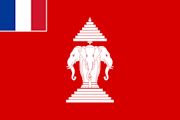

Um die Abhängigkeit des laotischen Buddhismus von Siam einzugrenzen, eröffnet Frankreich mit großem Pomp in Vientiane (ວຽງຈັນ) eine Zweigstelle des Institute Bouddhique. Vorsitzender des Instituts ist Prinz Phetsarath Ratanavongsa (ເຈົ້າເພັດຊະລາດ ລັດຕະນະວົງ, 1890 - 1959), Sekretär ist Maha Sila Viravong (ມະຫາ ສິລາ ວີຮະວົງສ໌, 1905 - 1987)
Abb.: Lage von Vientiane (ວຽງຈັນ)
[Bildquelle: Wikimedia. -- Public domain]
1931-02-02

Schließung der Gesandtschaft Siams in Berlin aus finanziellen Gründen. Der Gesandte für das DEutsche Reich residiert zukünftig in London.
1931-02-03
Bangkok Times warnt, dass die Wirtschaftskrise zu einer Gesellschaftskrise werden könnte. Sie empfiehlt höhere Steuern für die Reichen, mehr Staatsausgaben für wirtschaftliche Entwicklung und eine grundsätzliche Wirtschaftsreform.
1931-02-16
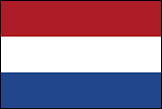
Die niederländische Fluggesellschaft KLM beginnt den Linienverkehr nach Niederländisch-Ostindien auf der Route Amsterdam - Bangkok - Medan (Sumatra) - Batavia (Jakarta). Flugdauer: 10 Tage.
Abb.: Lage von Medan und Batavia
[Bildquelle: Bedeker 1914]
1931-03
Das Staatsdefizit beträgt 11 Mio. Baht. Deswegen werden die Gehälter der Staatsbediensteten um 5 bis 10% gekürzt.
1931-03-06 - 1931-03-15

Besuch des deutschen Leichten Kreuzers Emden (1925 - 1945) in Bangkok. Die Bestzung wird mit einem großen Fest im Palast des Prinzen Paribatra Sukhumbandh, Prinz von Nakhon Sawan (สมเด็จพระเจ้าบรมวงศ์ เธอ เจ้าฟ้าบริพัตรสุขุมพันธุ์ กรมพระนครสวรรค์วรพินิต, 1881 - 1944) begrüßt. Zahlreiche in Deutschland ausgebildete Offiziere sind anwesend.
Abb.: Leichter Kreuzer Emden, 1930
[Bildquelle: Wikimedia. -- Public domain]
1931-03-14
Es gibt
- 73.500 Staatbeamte
Davon verdienen
- 72.800 (99%) weniger als 400 Baht pro Monat
1931-03-19 - 1931-07-28




Das Königspaar ist Ausland. Regent während der Abwesenheit des Königs ist Prince Paribatra Sukhumbhand, Prince of Nakhon Sawan (สมเด็จพระเจ้าบรมวงศ์เธอ เจ้าฟ้าบริพัตรสุขุมพันธุ์ กรมพระนครสวรรค์วรพินิต, 1881 - 1944). Das Königspaar besucht:
- Hong Kong
- Japan
- Kanada
- USA (1931-04-20 - 1931-07-28)
ausführlich: http://www.payer.de/thailandchronik/ressourcen.htm
Phongpaichit, Pasuk <ผาสุก พงษ์ไพจิตร, 1946 - > ; Baker, Chris <1948 - >: Thailand : economy and politics. -- Selangor : Oxford Univ. Pr., 1995. -- 449 S. ; 23 cm. -- ISBN 983-56-0024-4. -- Beste Geschichte des modernen Thailand.
Ingram, James C.: Economic change in Thailand 1850 - 1870. -- Stanford : Stanford Univ. Pr., 1971. -- 352 S. ; 23 cm. -- "A new edition of Economic change in Thailand since 1850 with two new chapters on developments since 1950". -- Grundlegend.
Akira, Suehiro [末廣昭] <1951 - >: Capital accumulation in Thailand 1855 - 1985. -- Tokyo : Centre for East Asian Cultural Studies, ©1989. -- 427 S. ; 23 cm. -- ISBN 4896561058. -- Grundlegend.
Skinner, William <1925 - 2008>: Chinese society in Thailand : an analytical history. -- Ithaca, NY : Cornell Univ. Press, 1957. -- 459 S. ; 24 cm. -- Grundlegend.
Mitchell, B. R. (Brian R.): International historical statistics : Africa and Asia. -- London : Macmillan, 1982. -- 761 S. ; 28 cm. -- ISBN 0-333-3163-0
Credner, Wilhelm <1892 - 1948>: Siam das Land der Tai : eine Landeskunde auf Grund eigner Reisen und Forschungen. -- Stuttgart : Engelhorn, 1935. -- 423 S. : Ill.
Landon, Kenneth Perry <1903 - 1993>: Siam in transition : a brief survey of cultural trends in the five years since the revolution of 1932. -- Chicago : Univ. of Chicago Press, 1939. -- 328 S. ; 24 cm.
Barmé, Scot: Woman, man, Bangkok : love, sex, and popular culture in Thailand. -- Lanham : Rowman & Littlefield, 2002. -- 273 S. : Ill. ; 24 cm. -- ISBN 0-7425-0157-4
Zu Chronik B. E. 2474 / 1931-04 - 1932-03